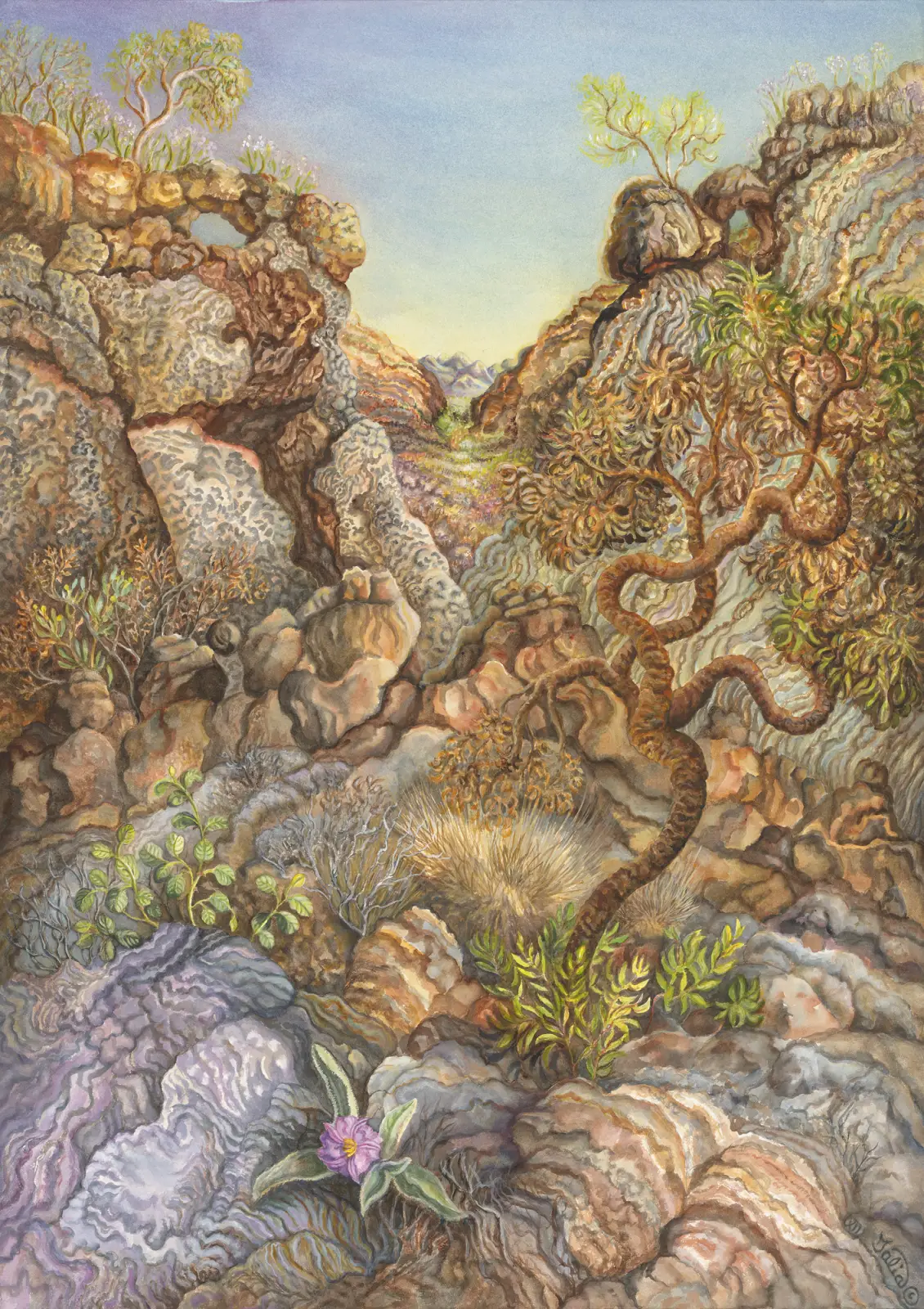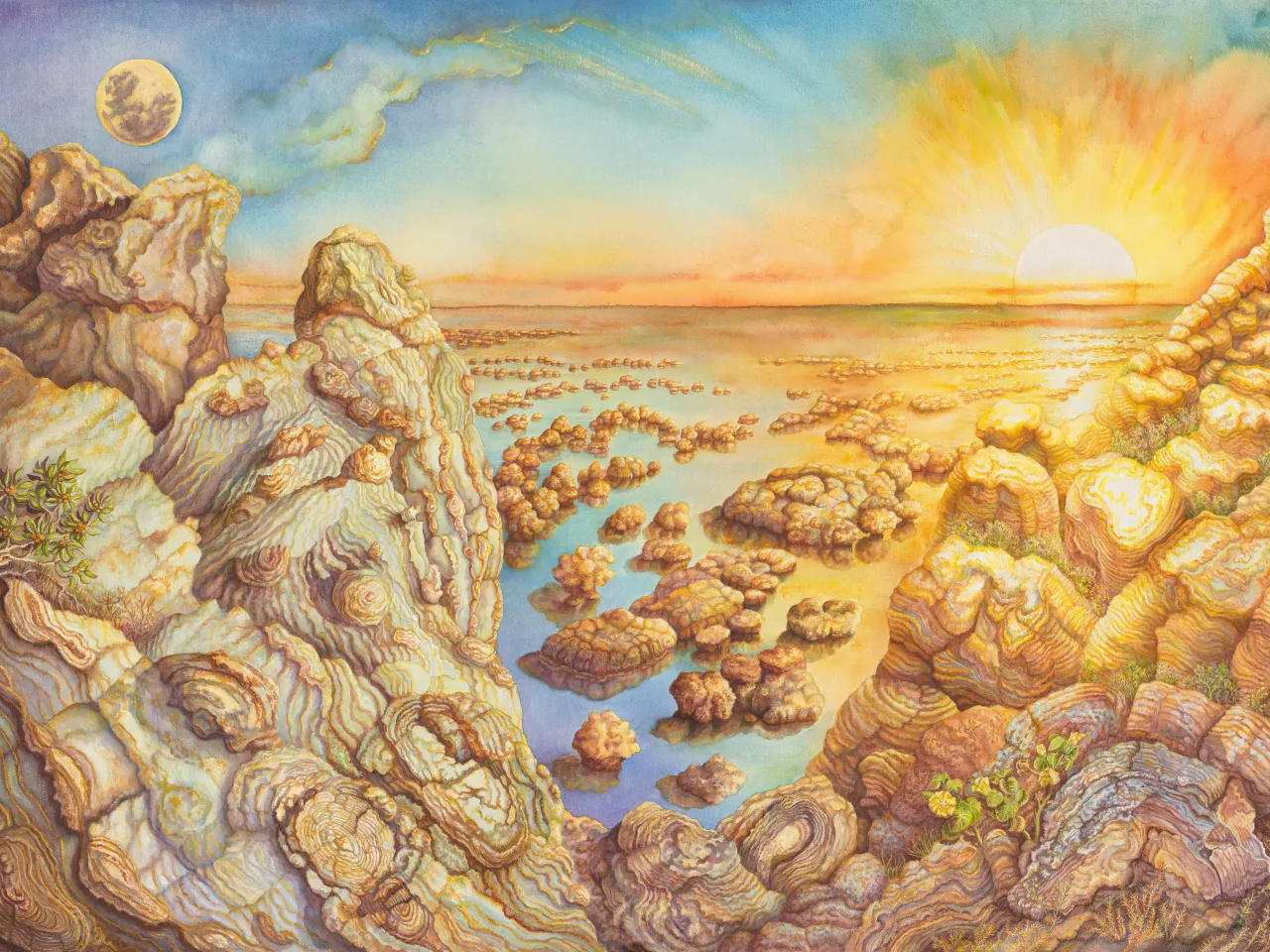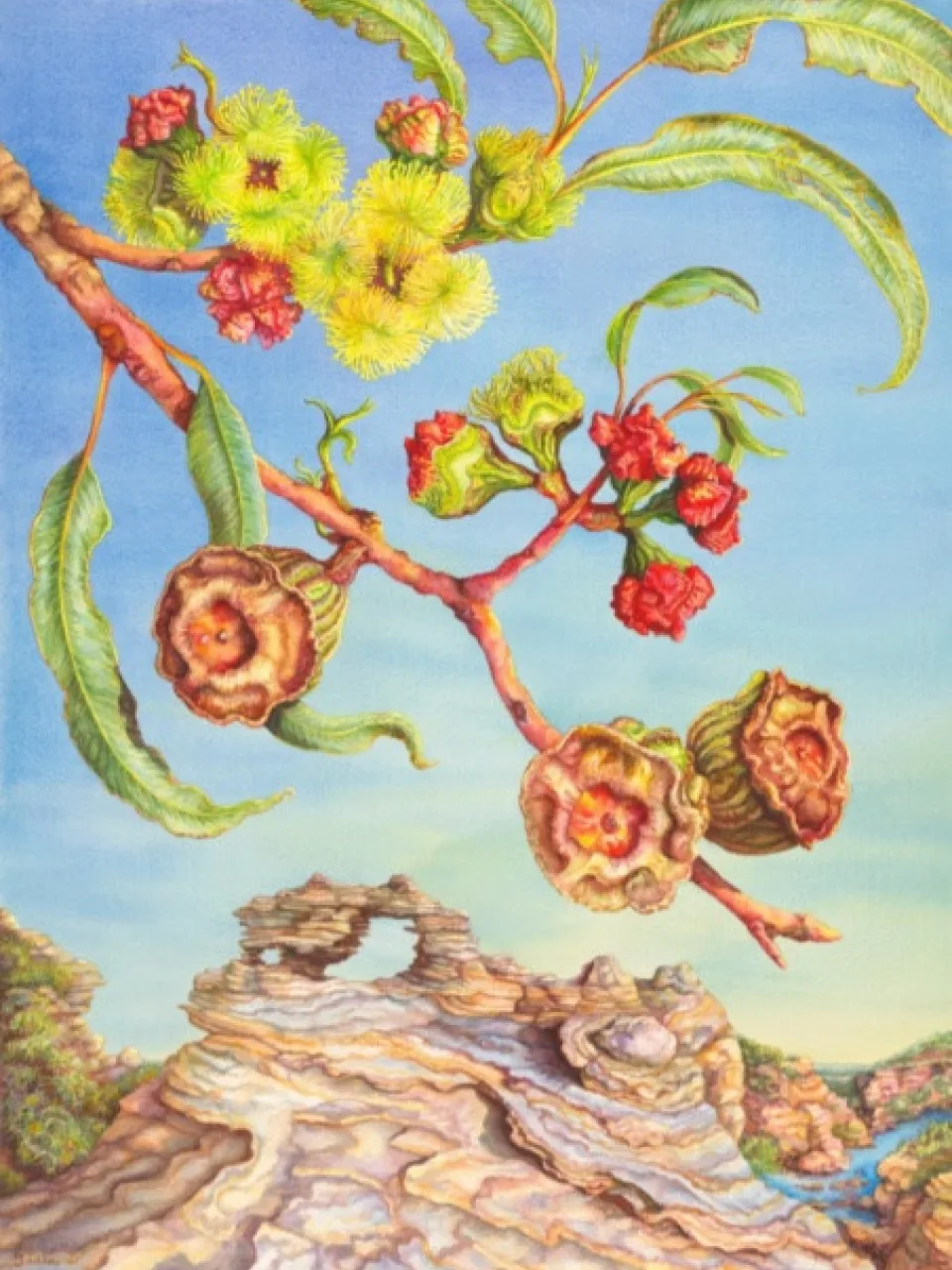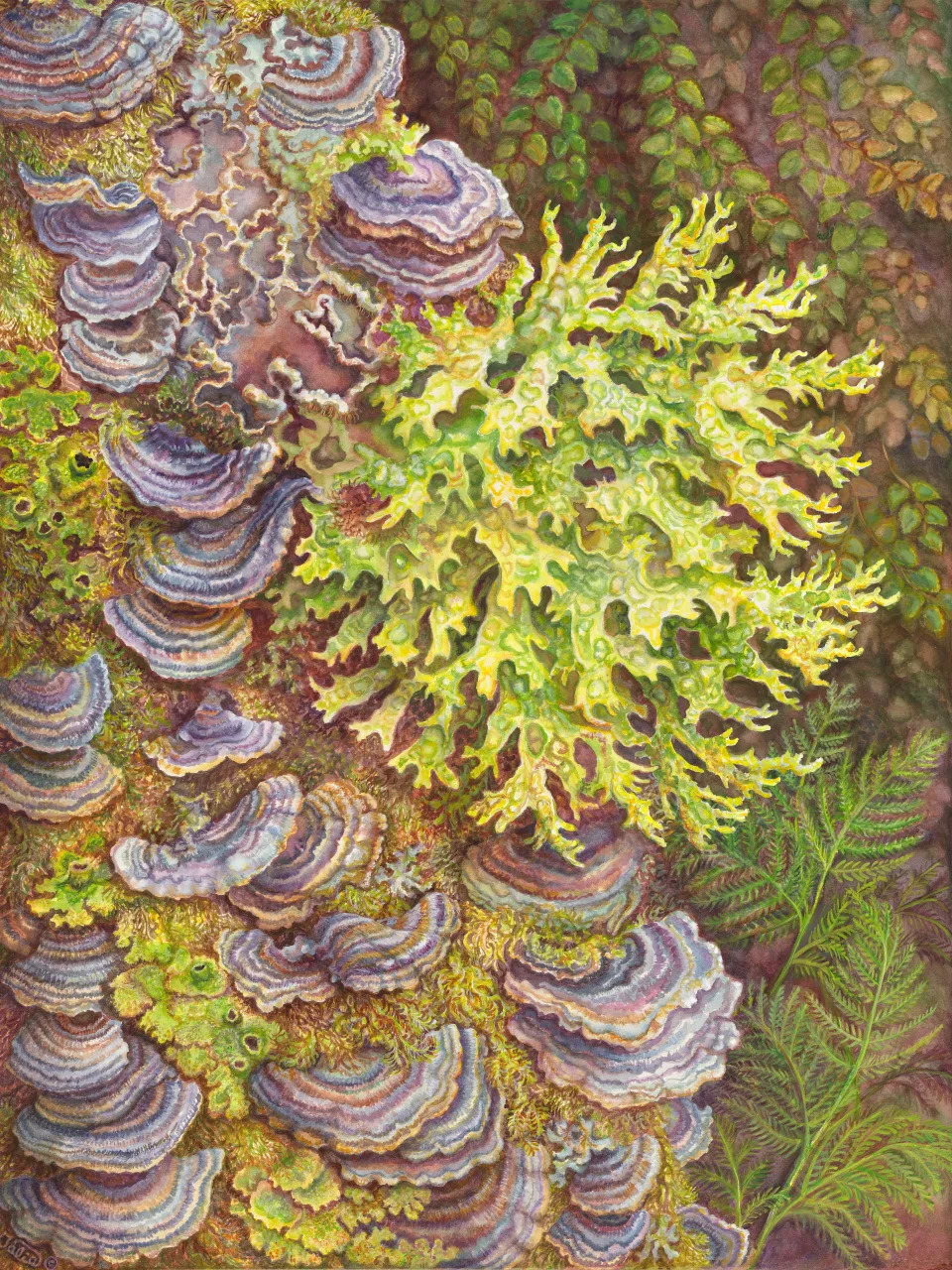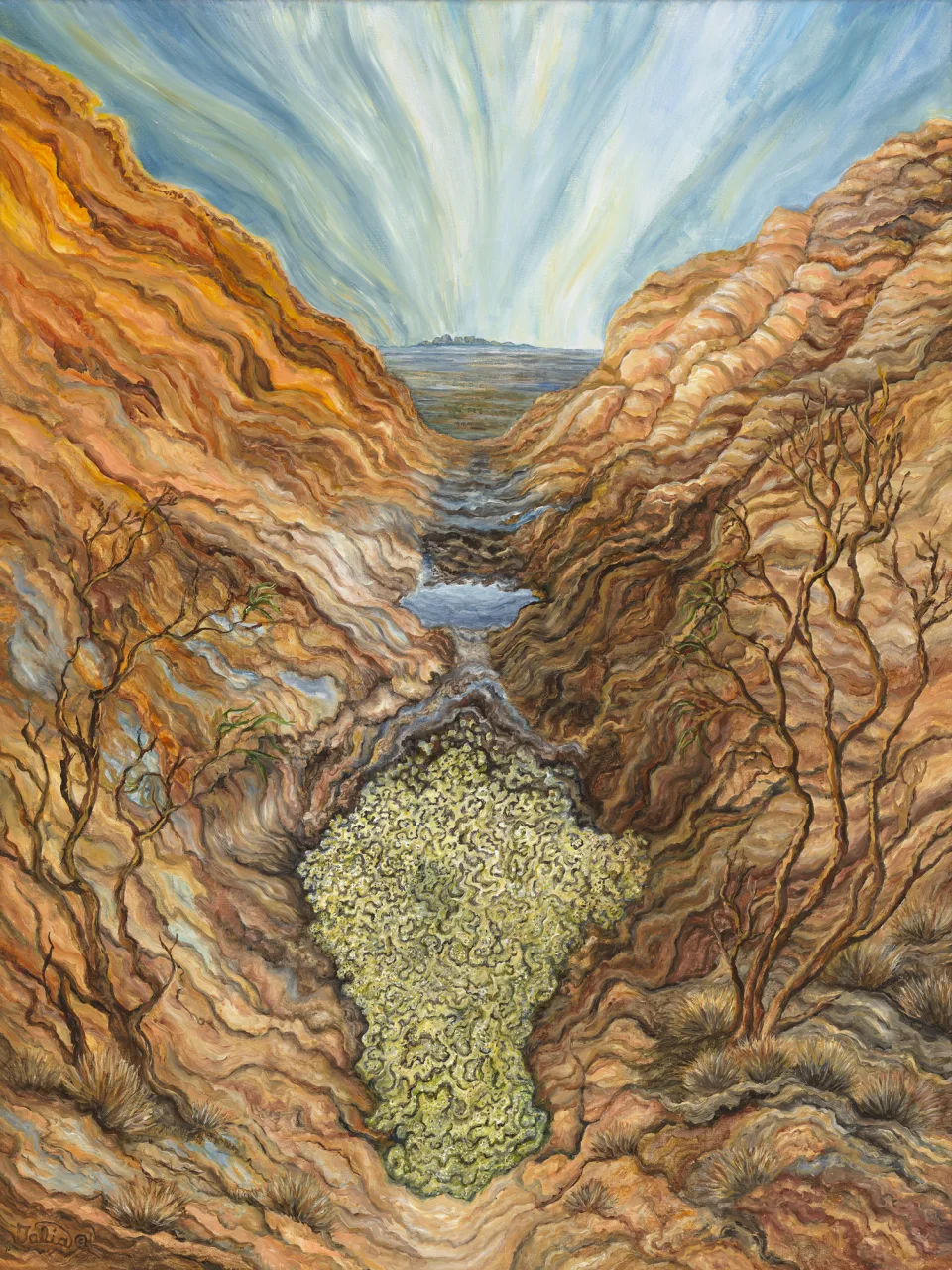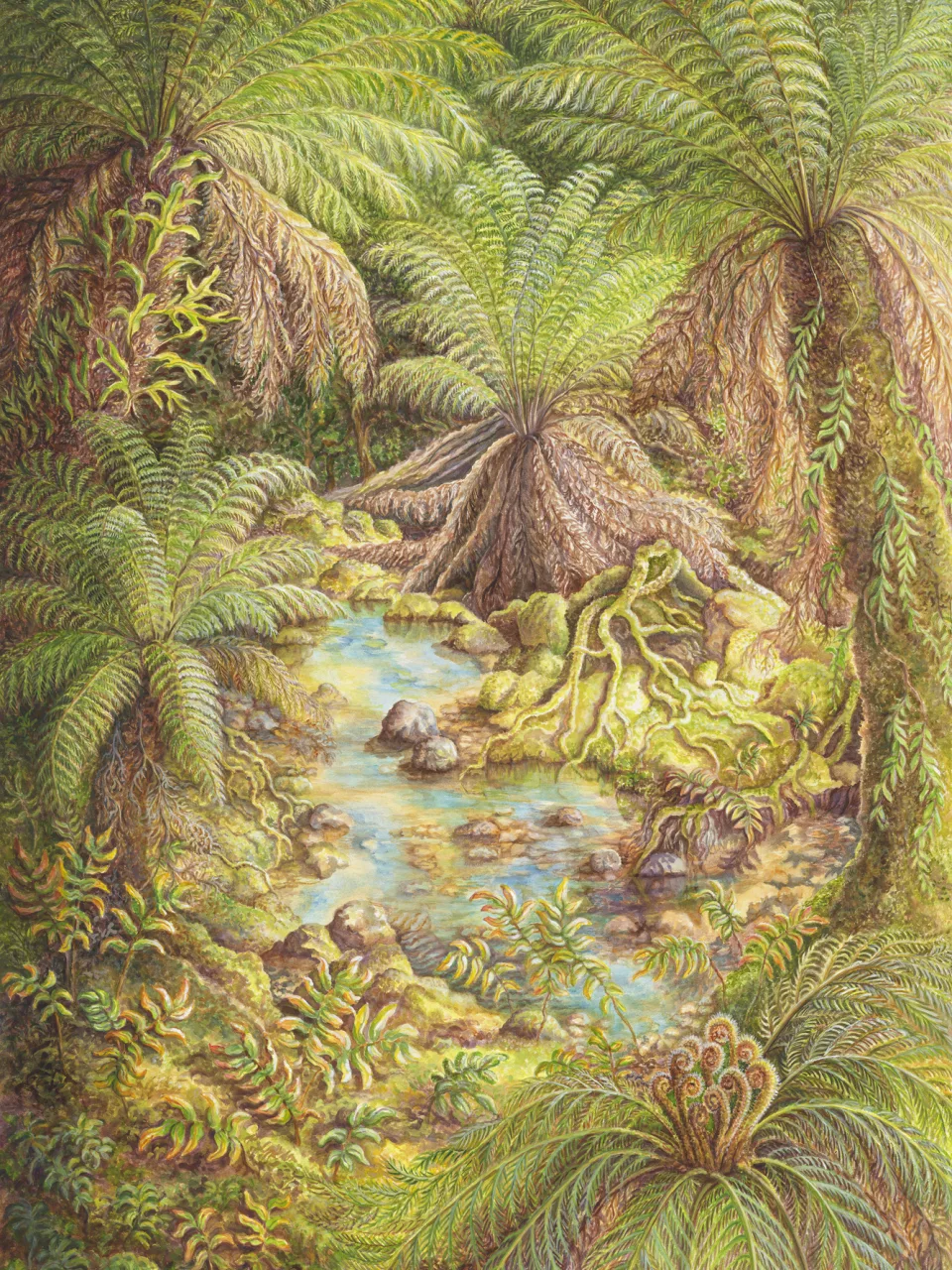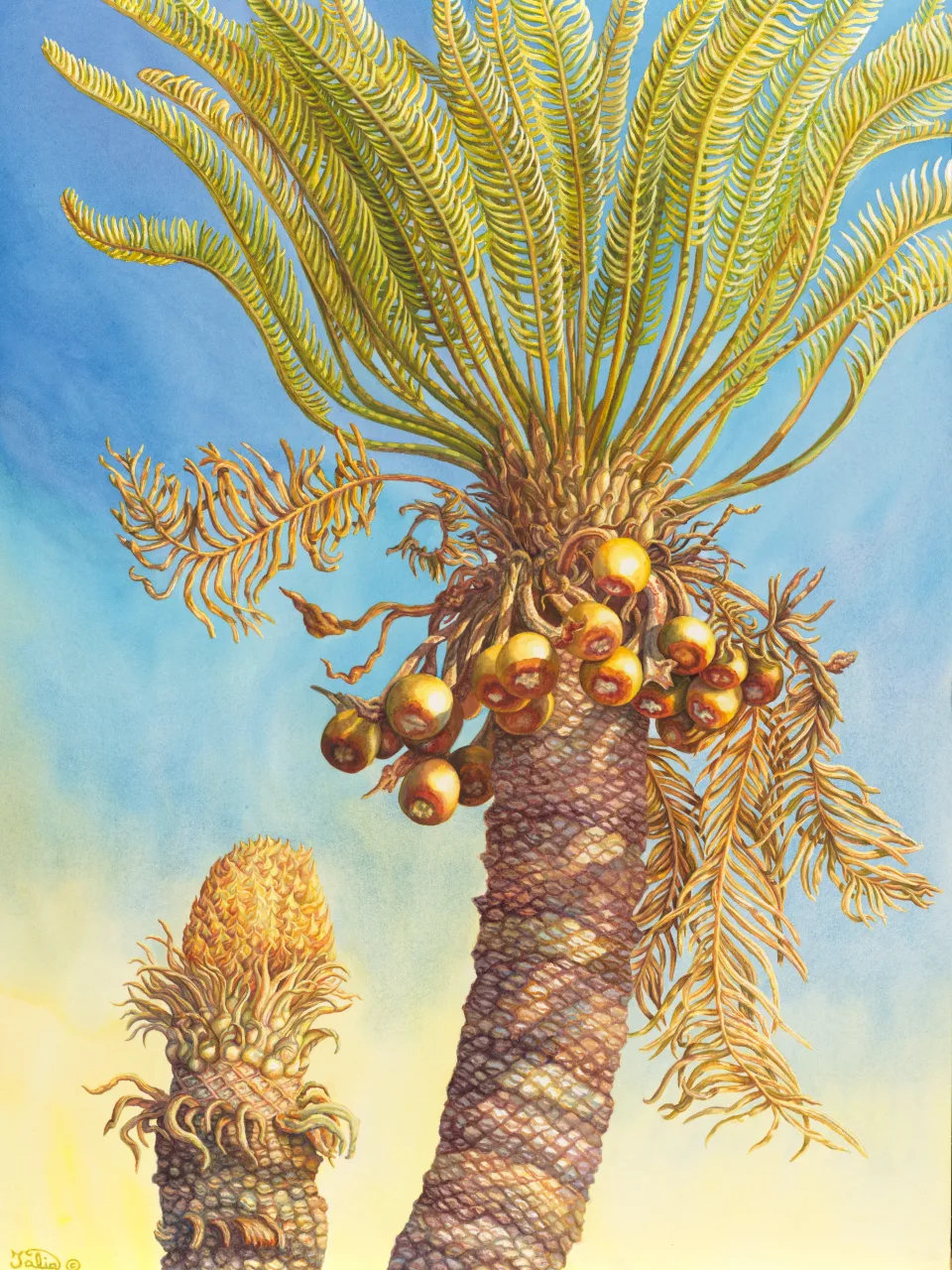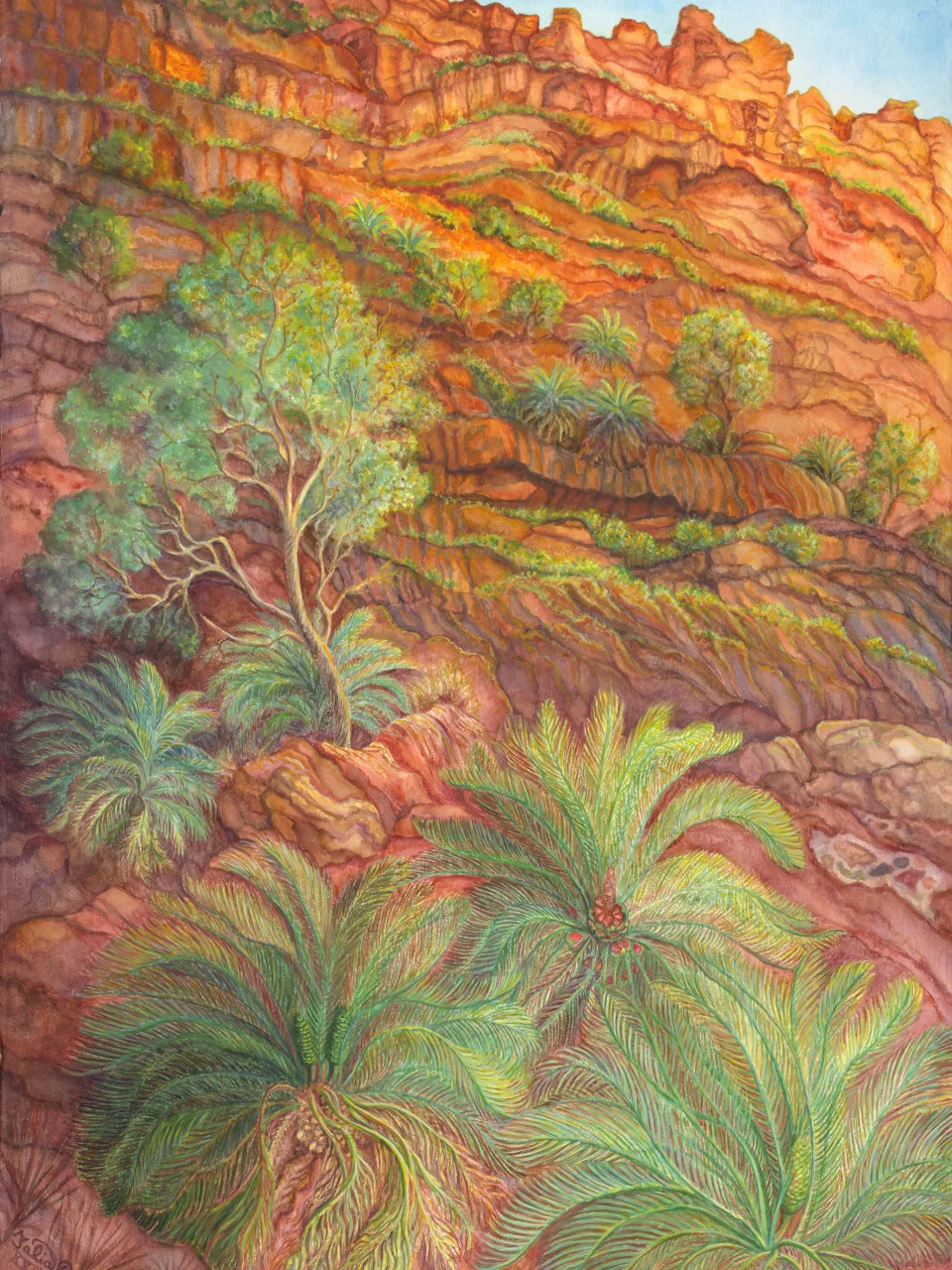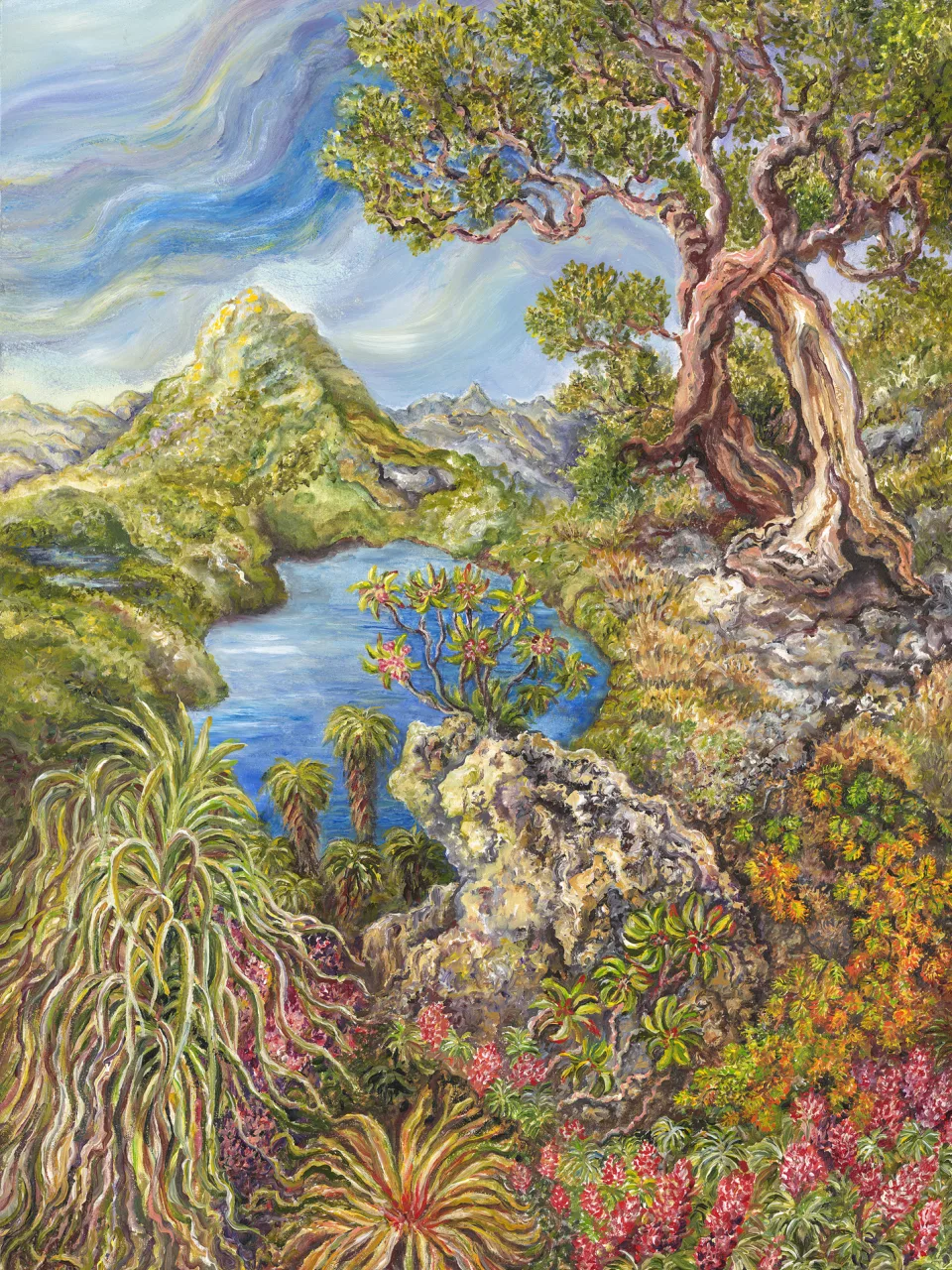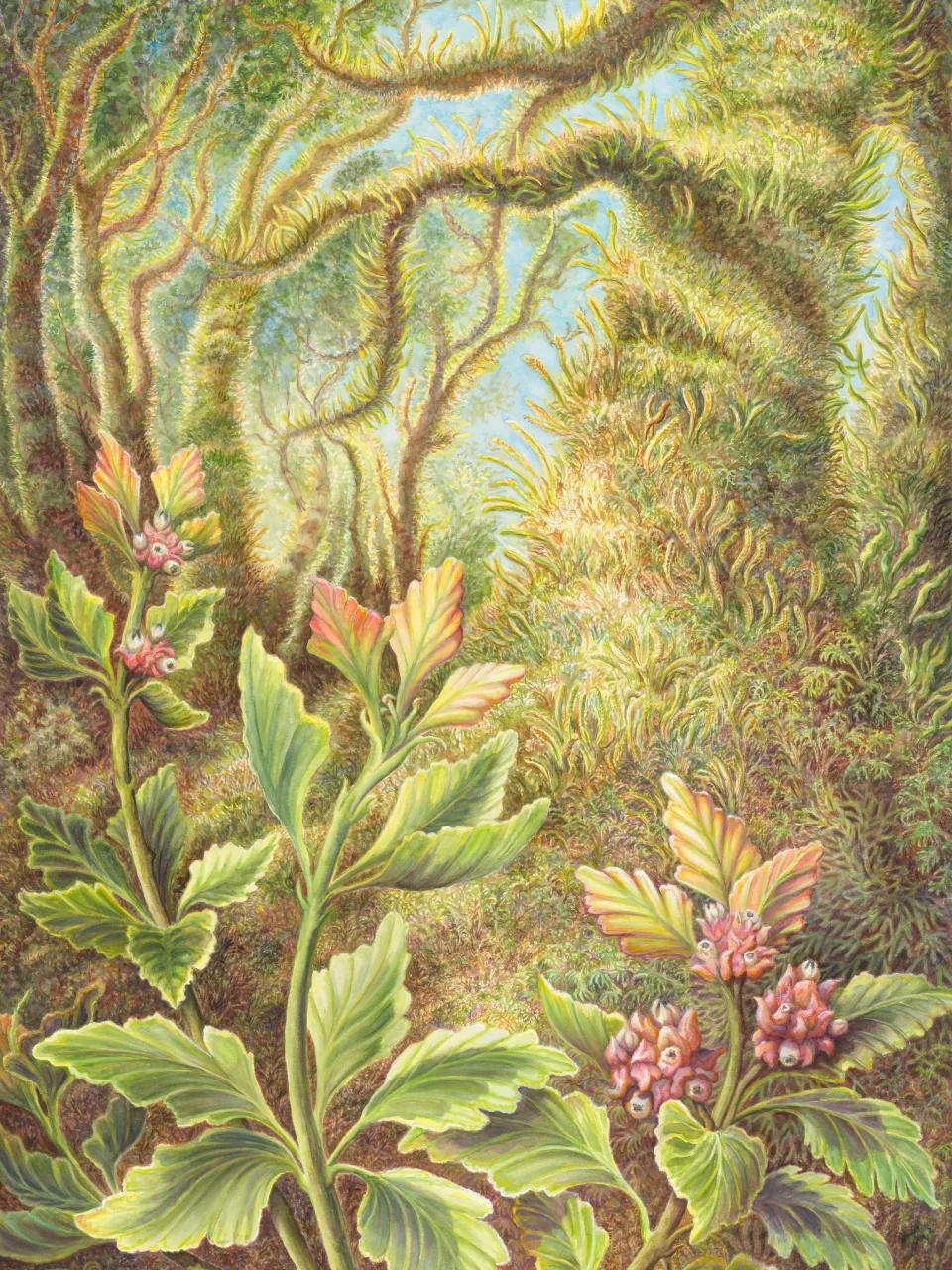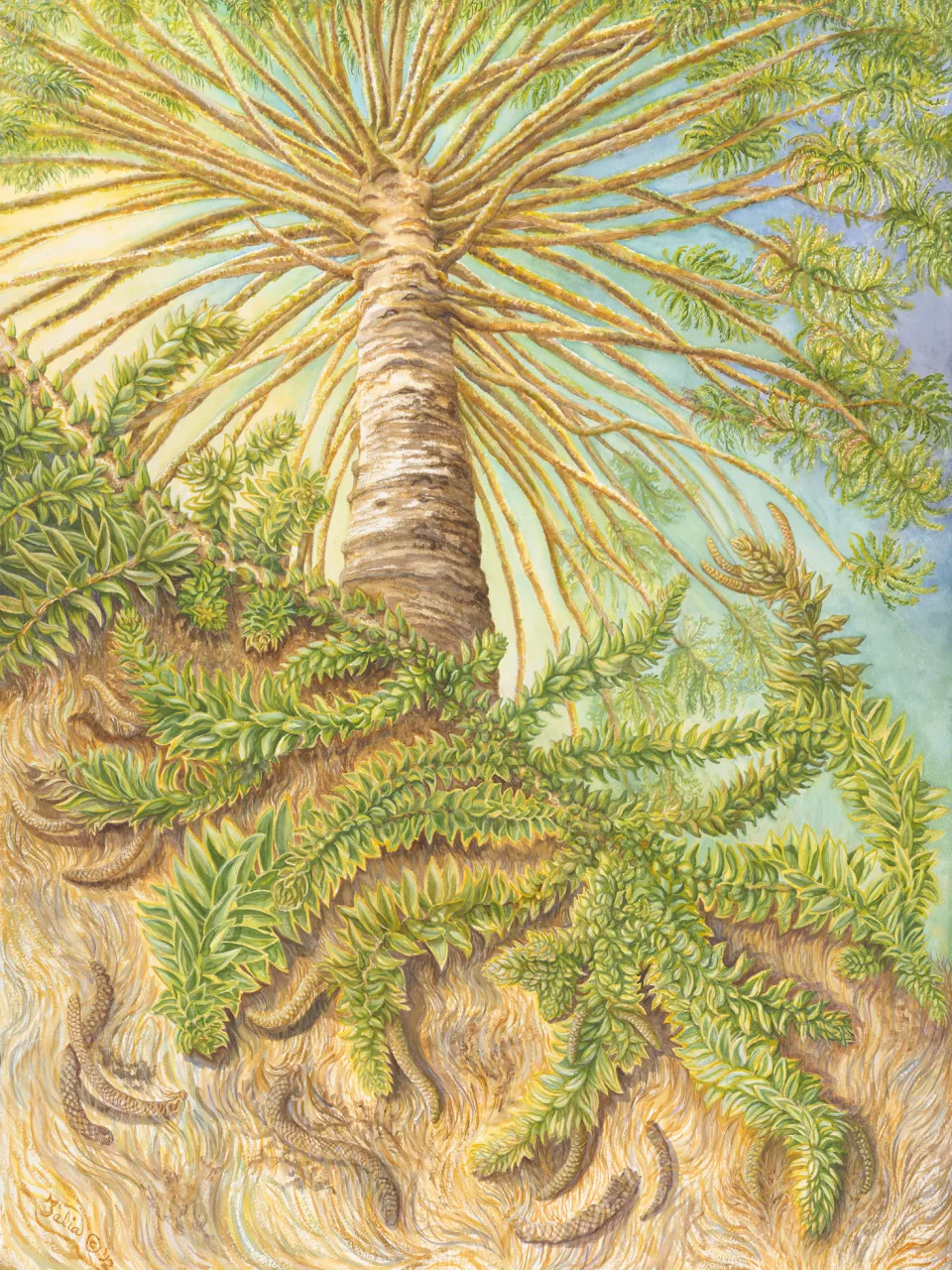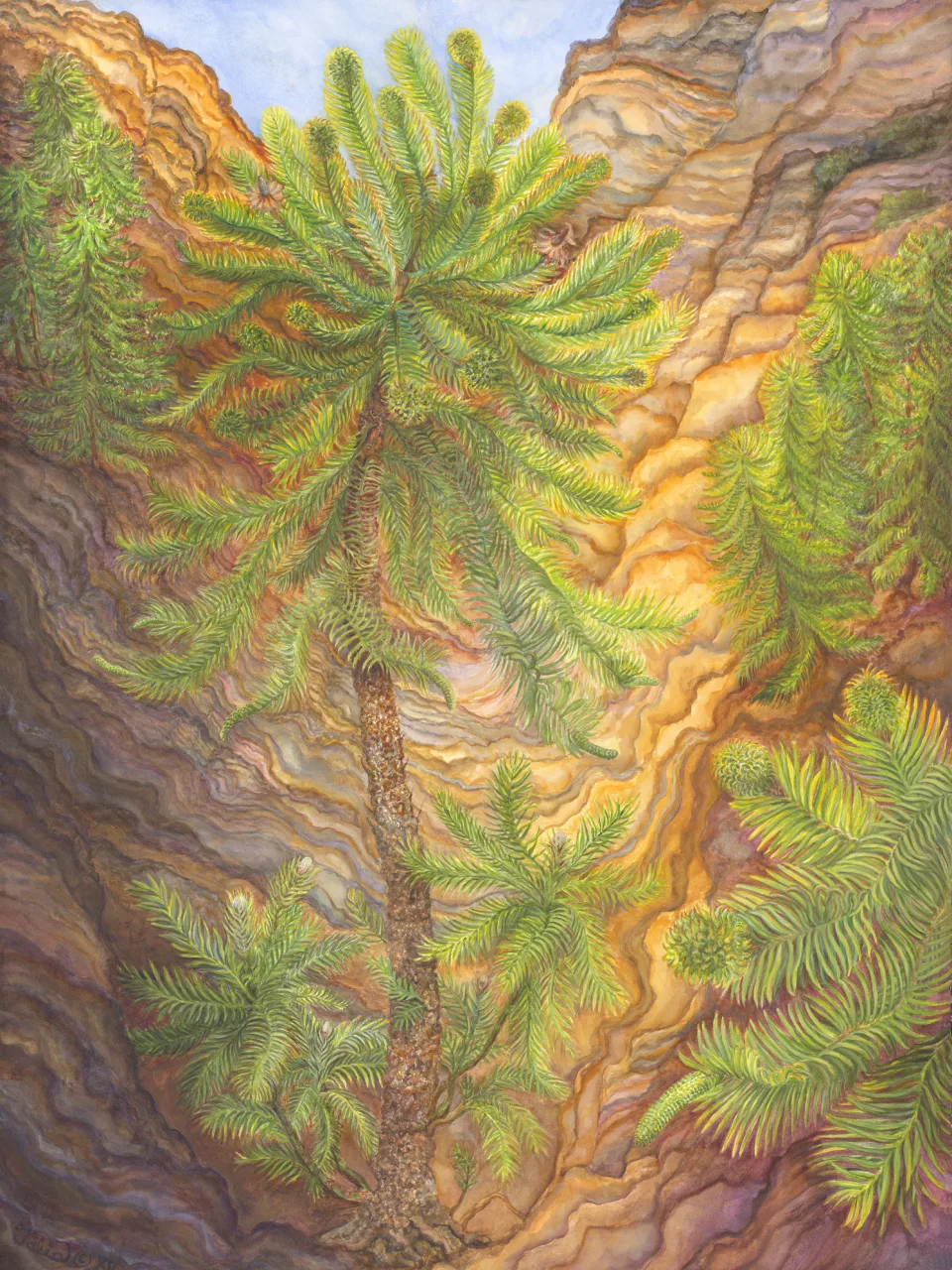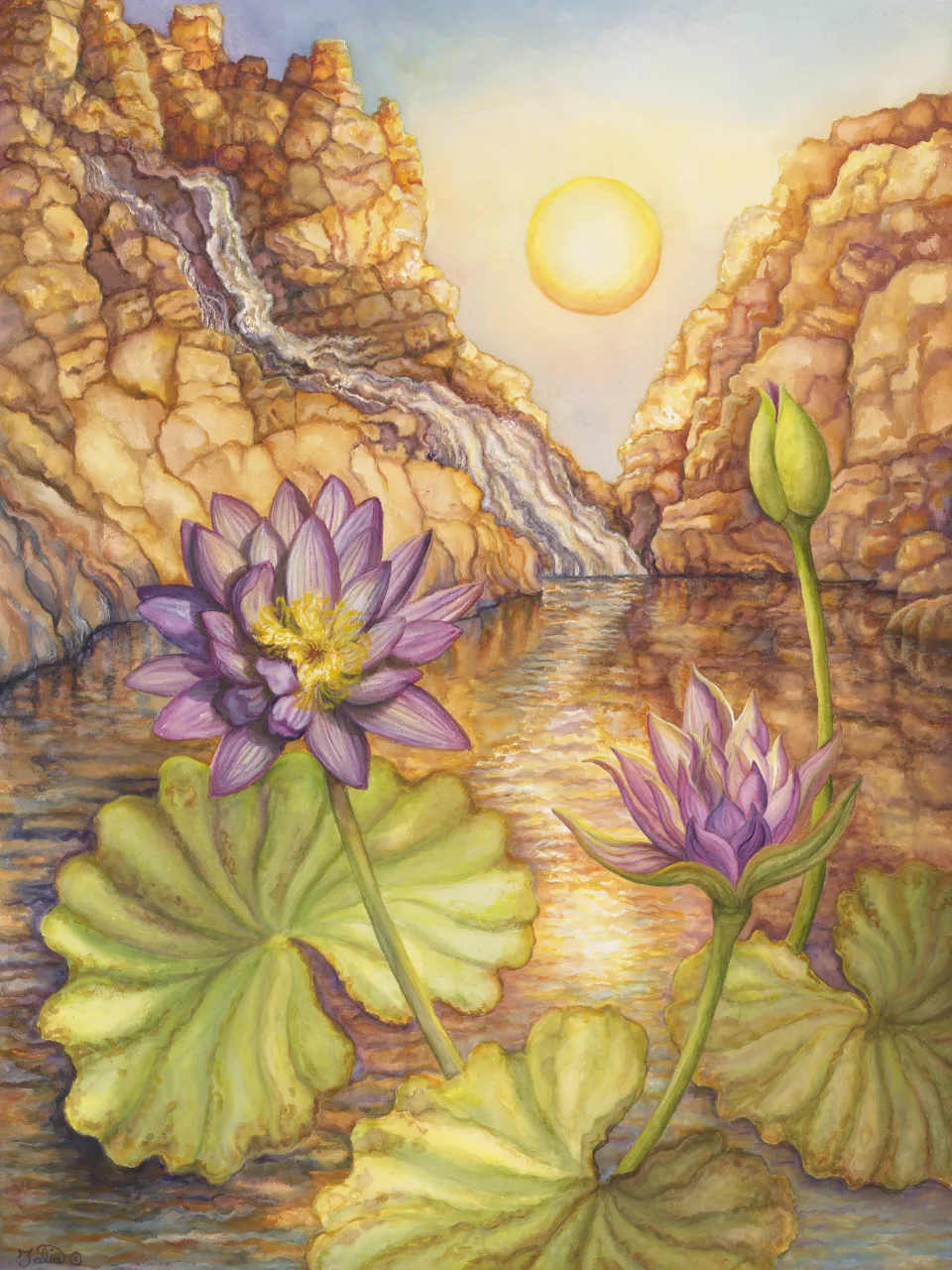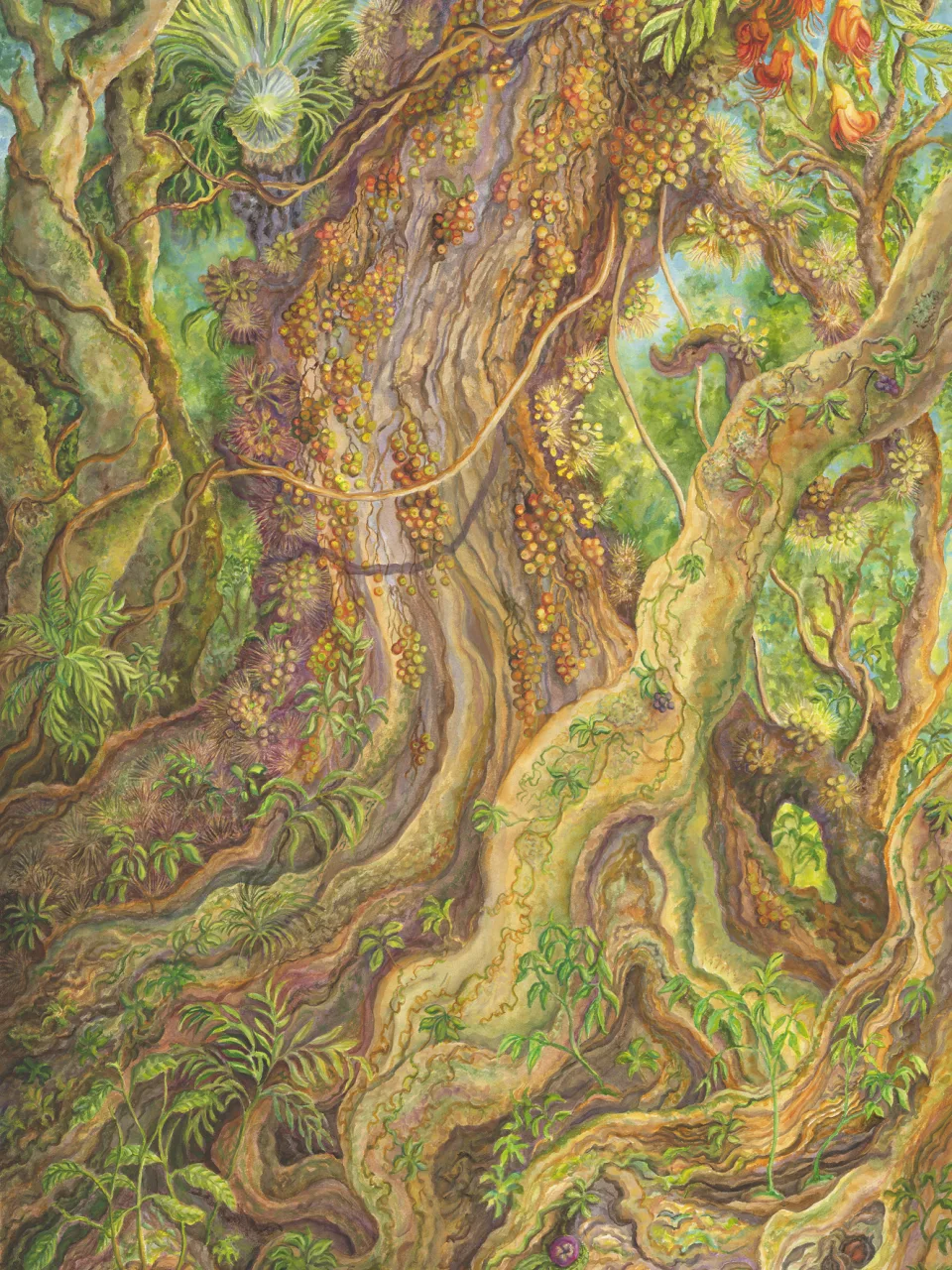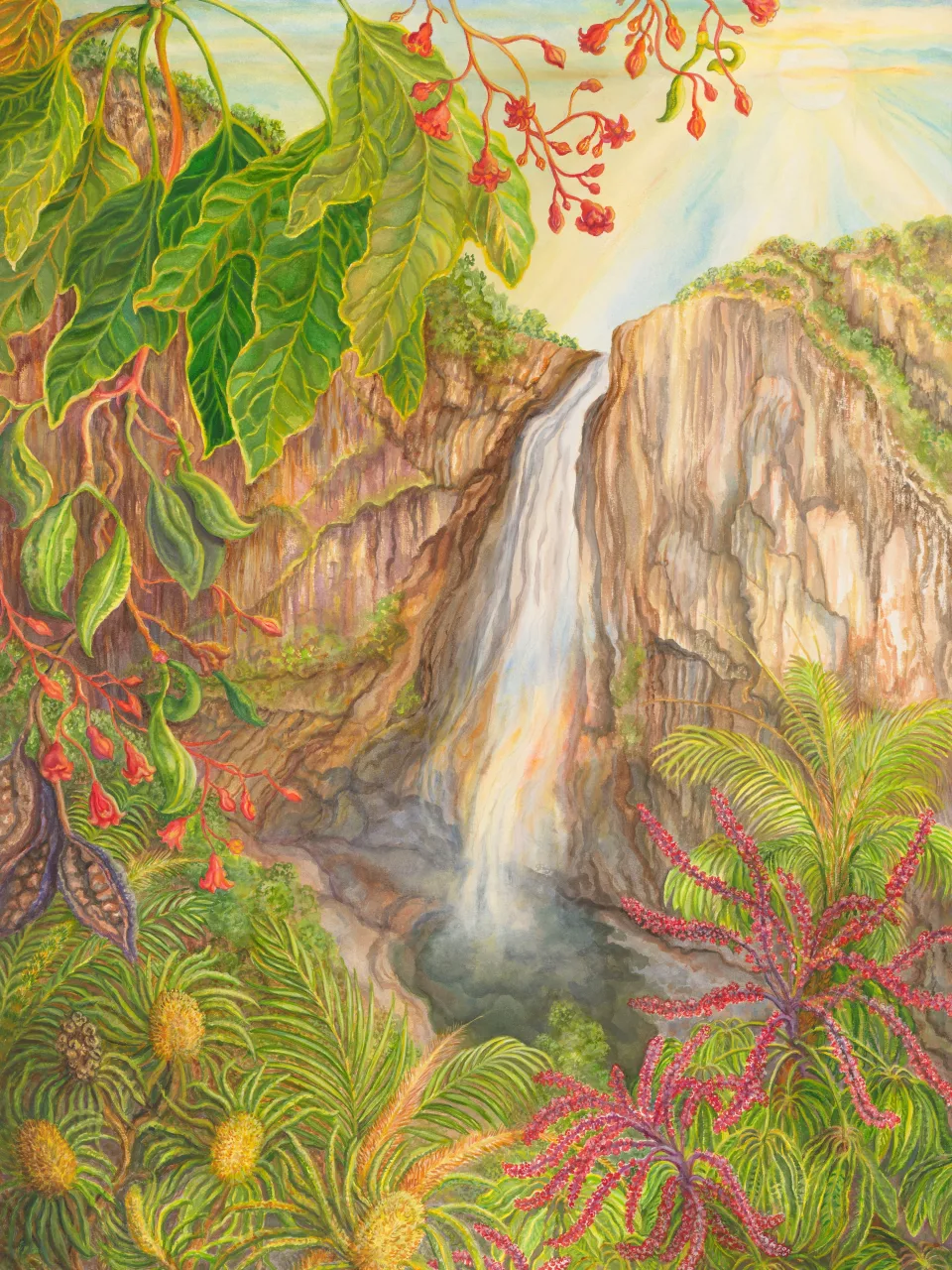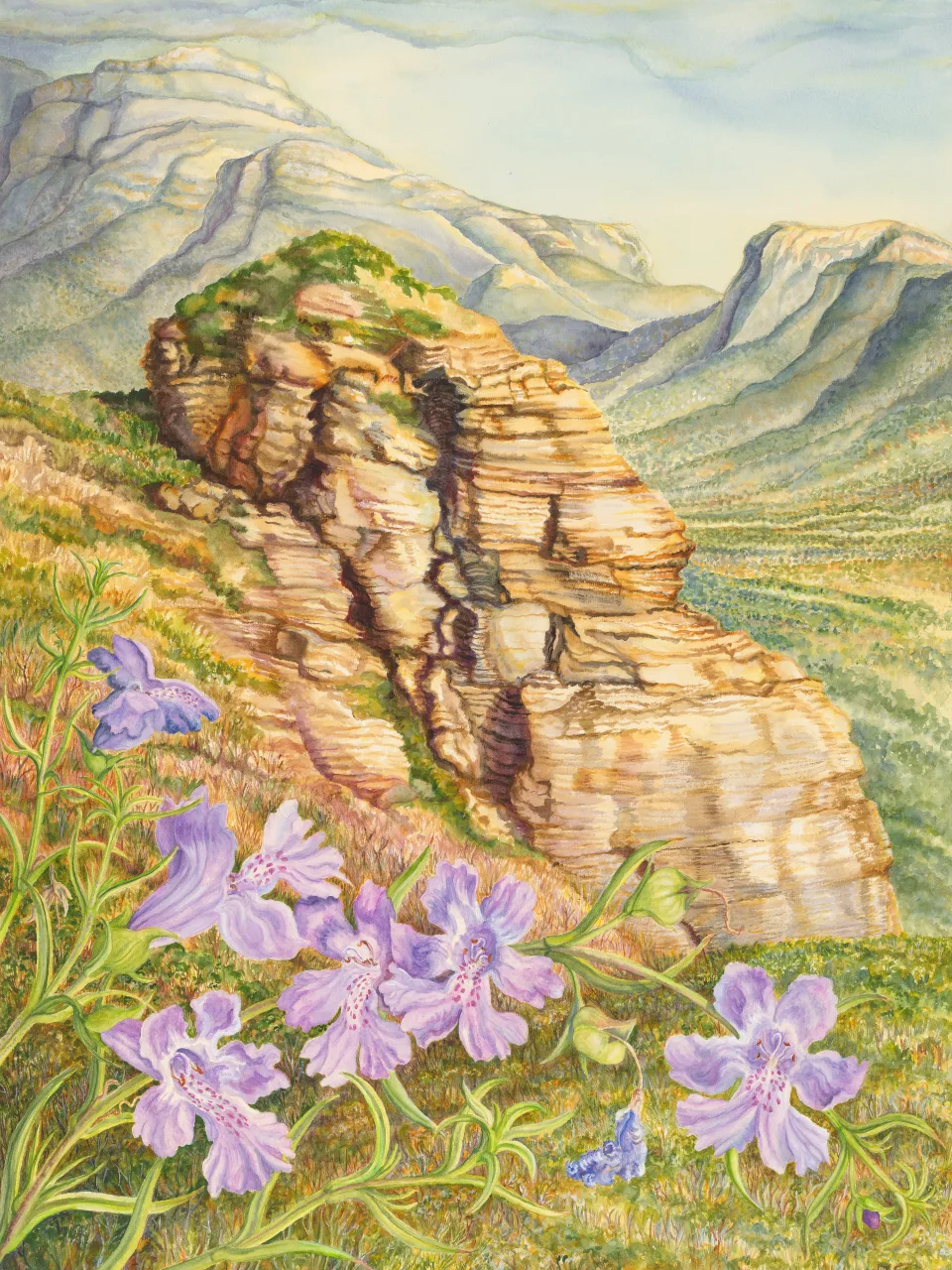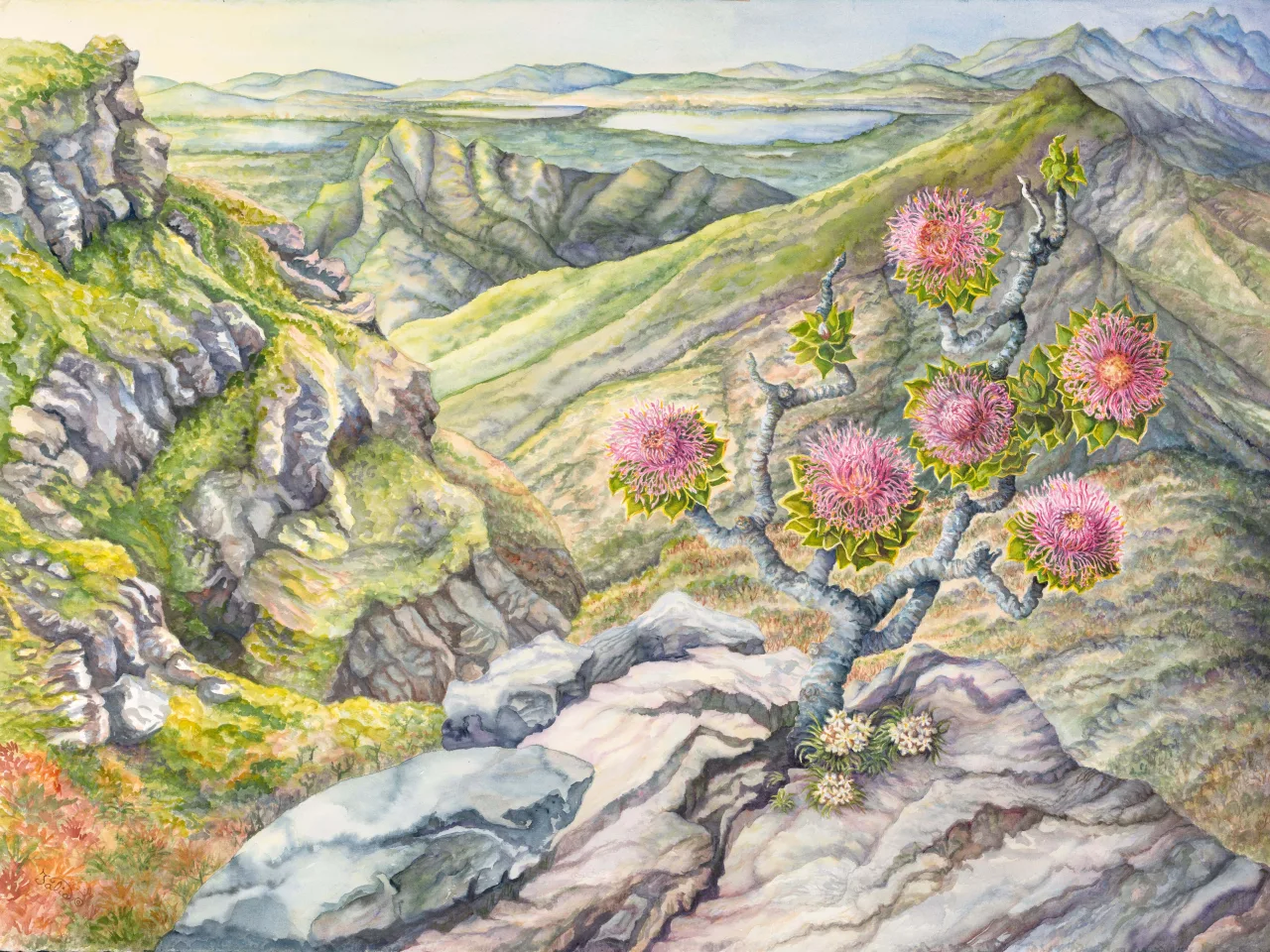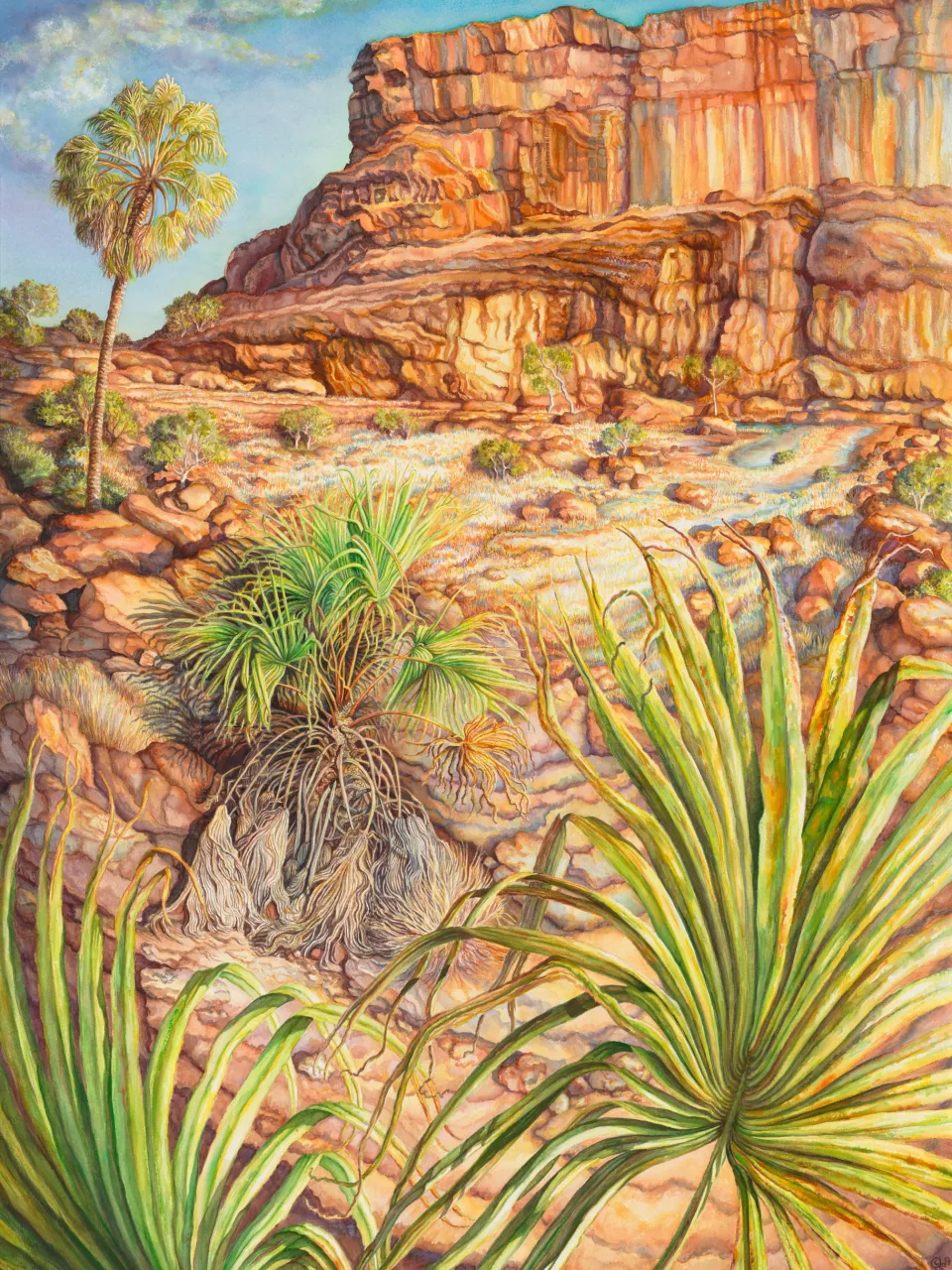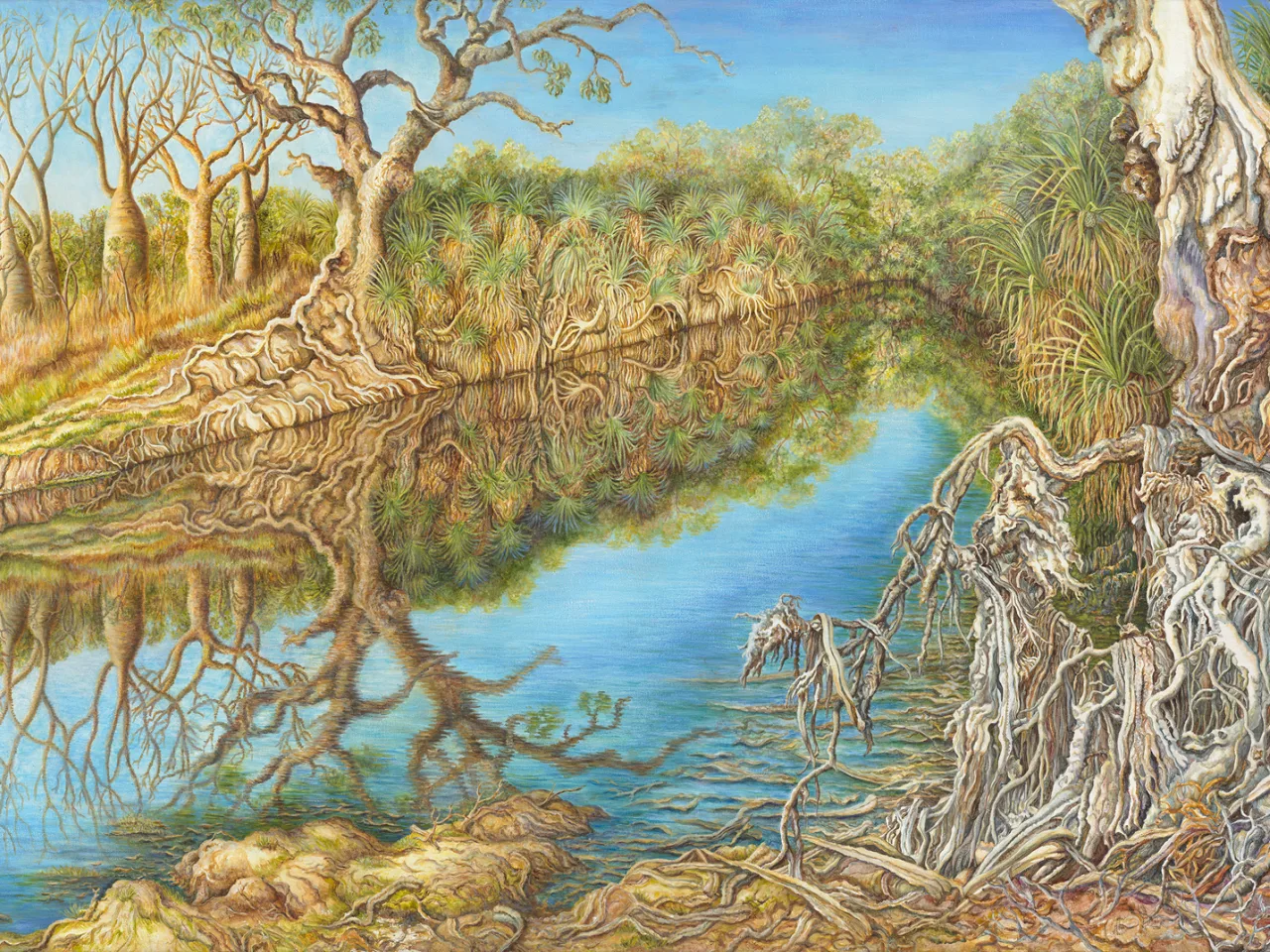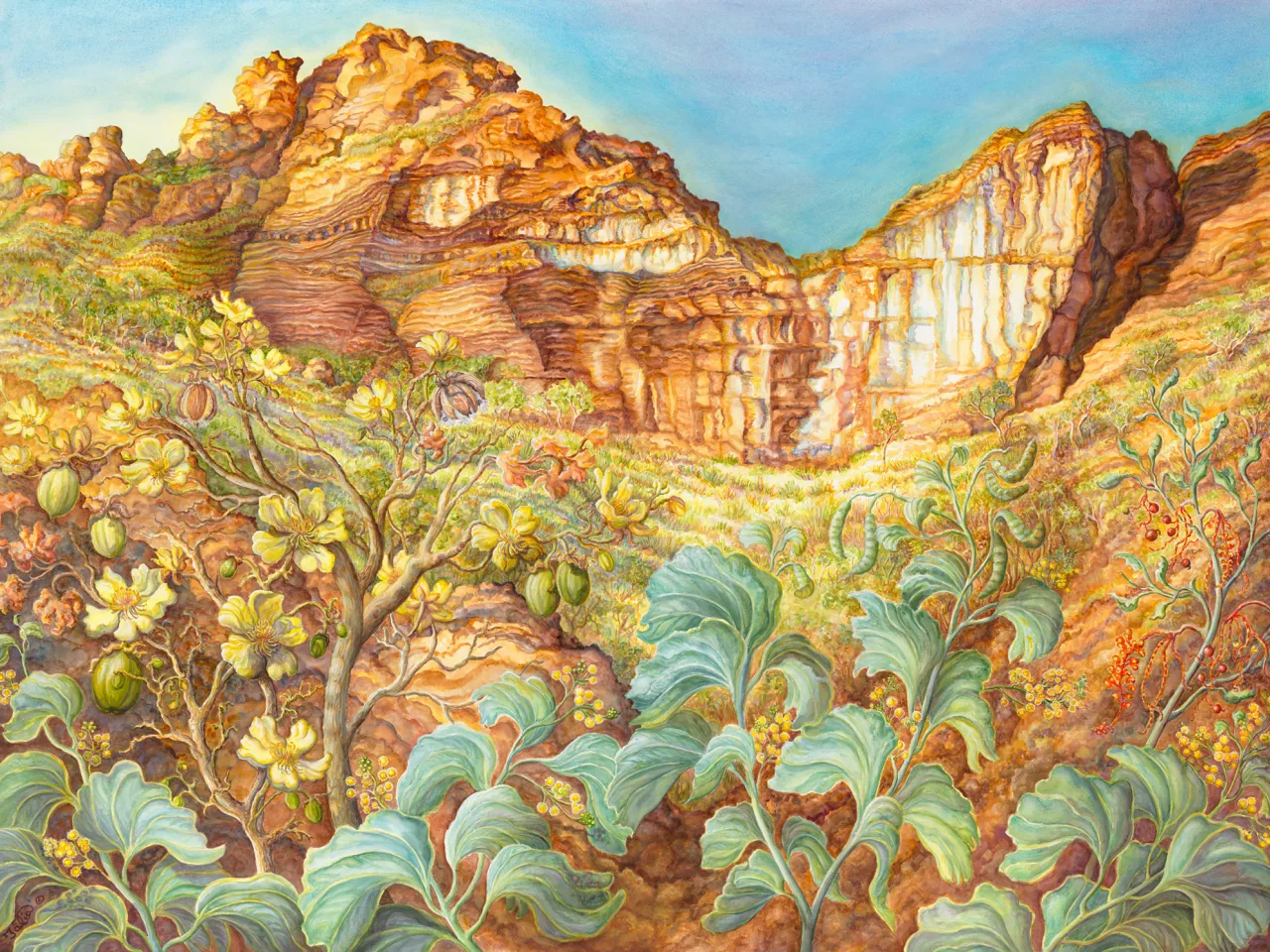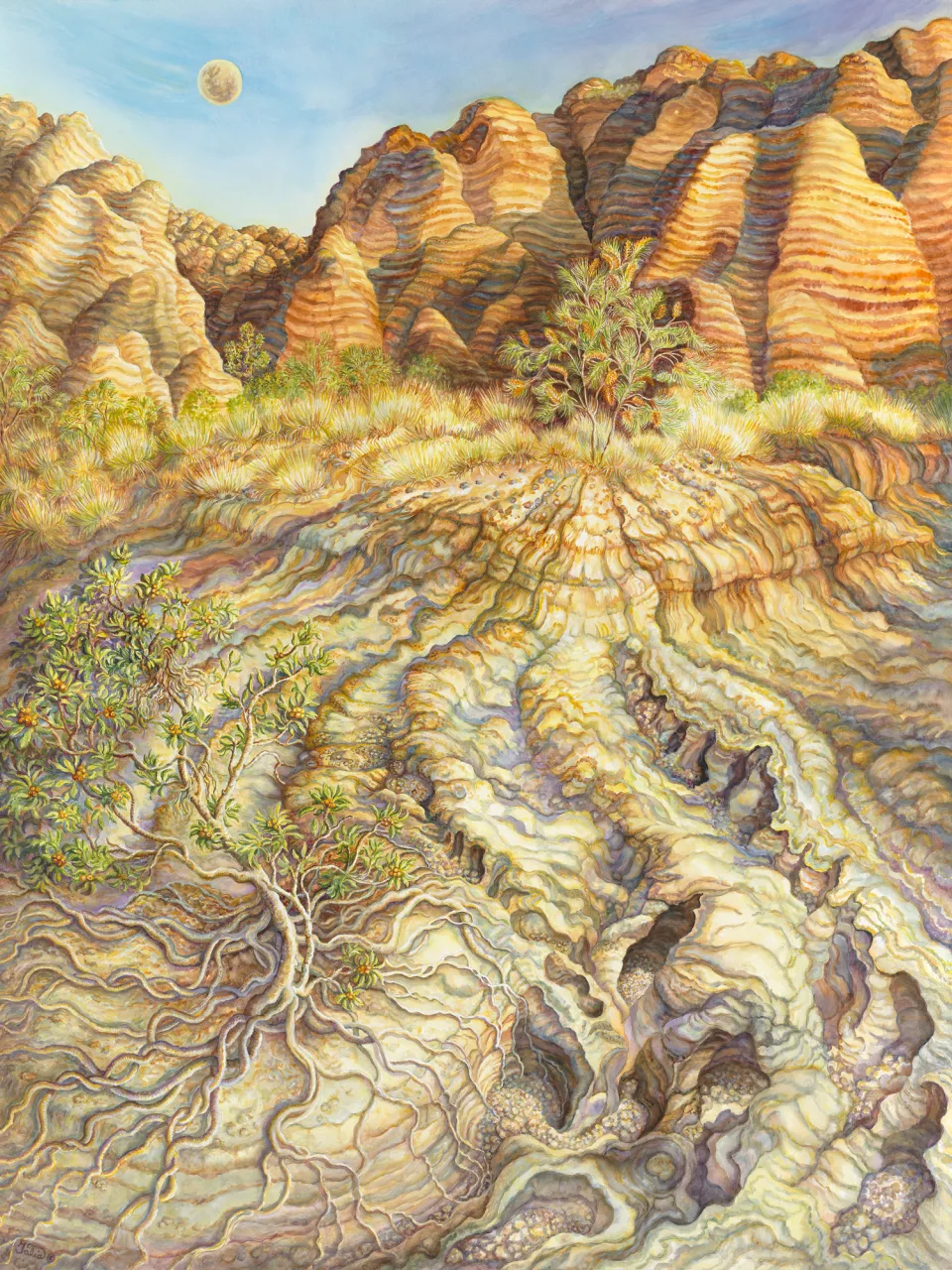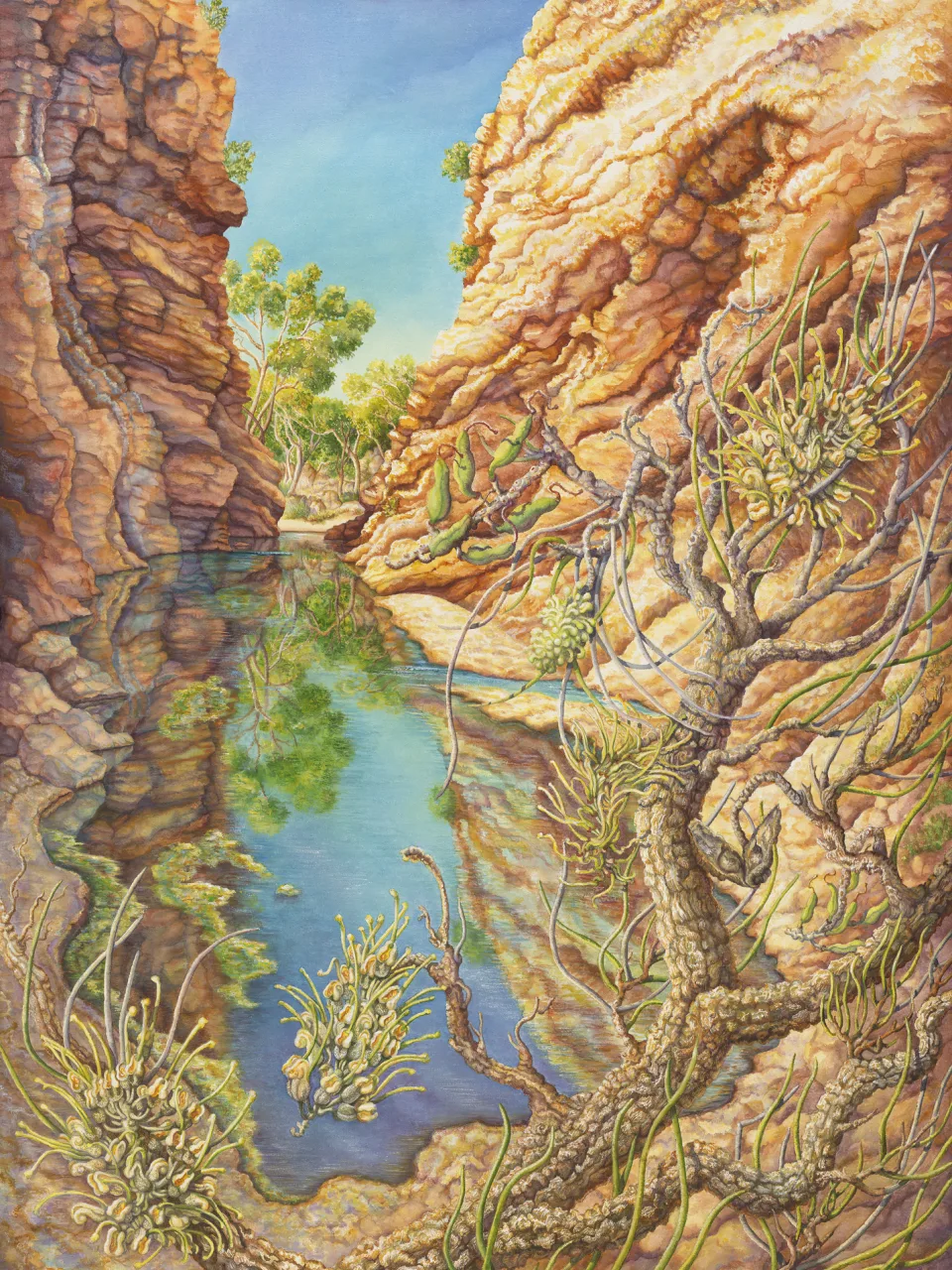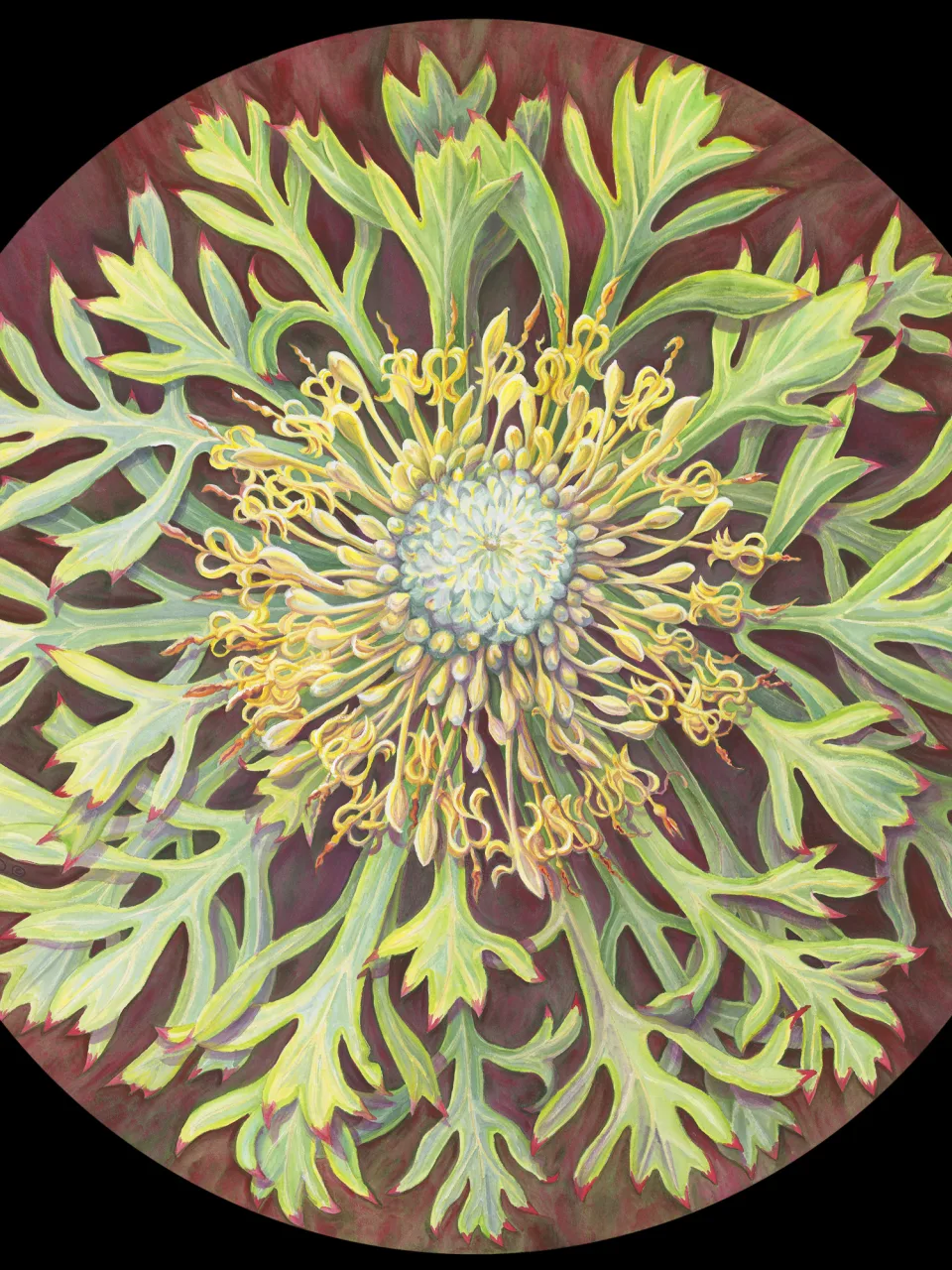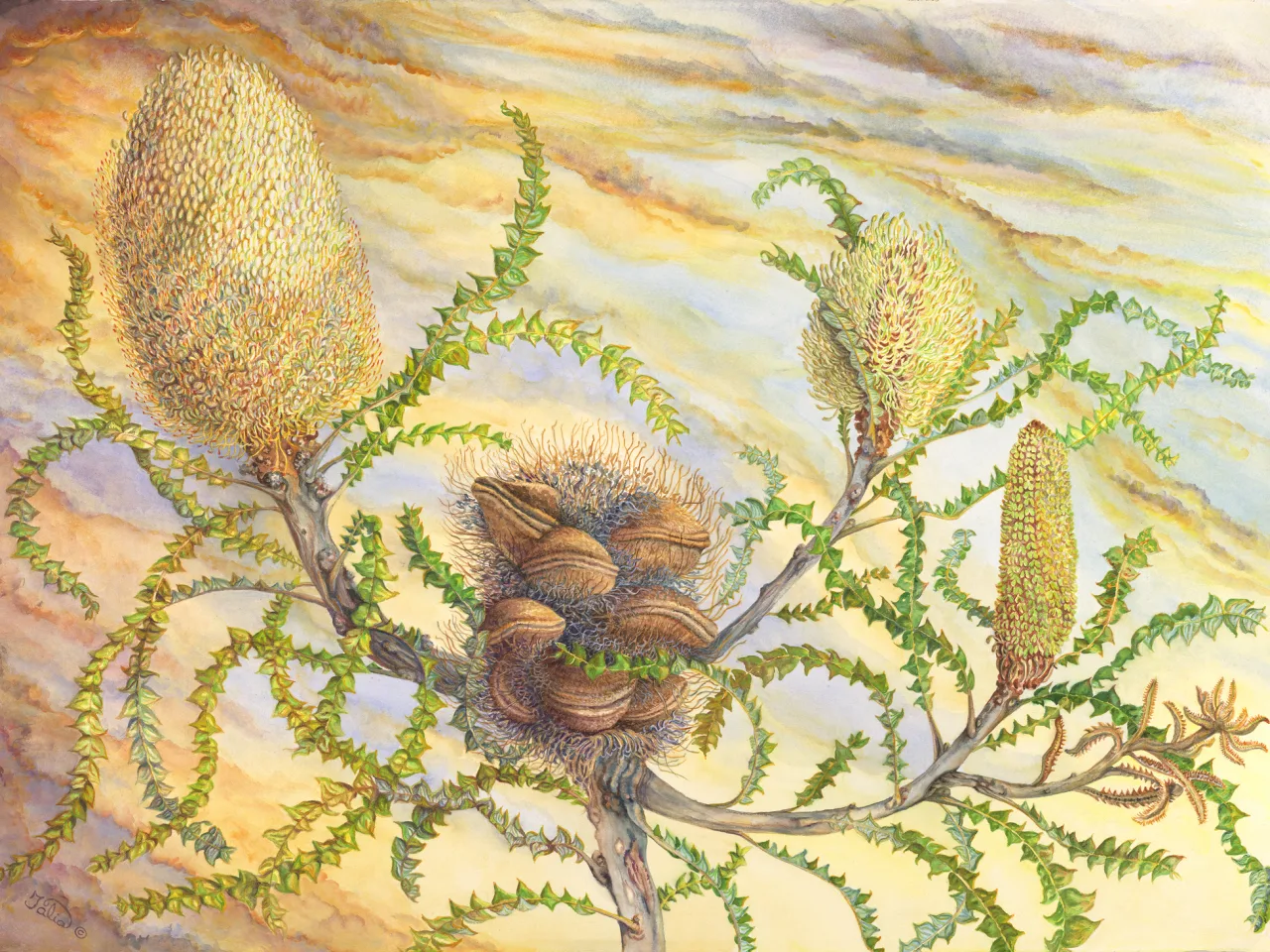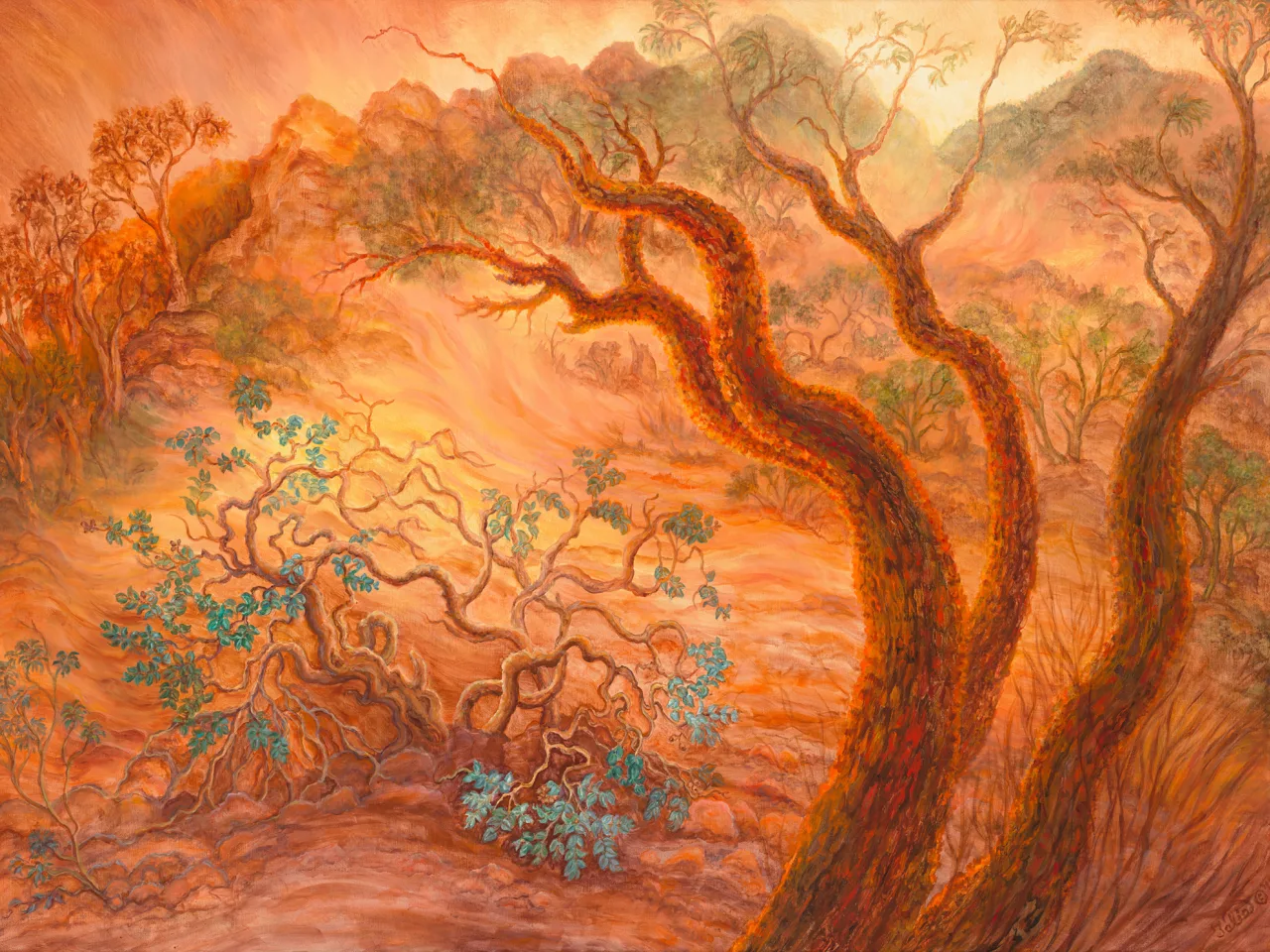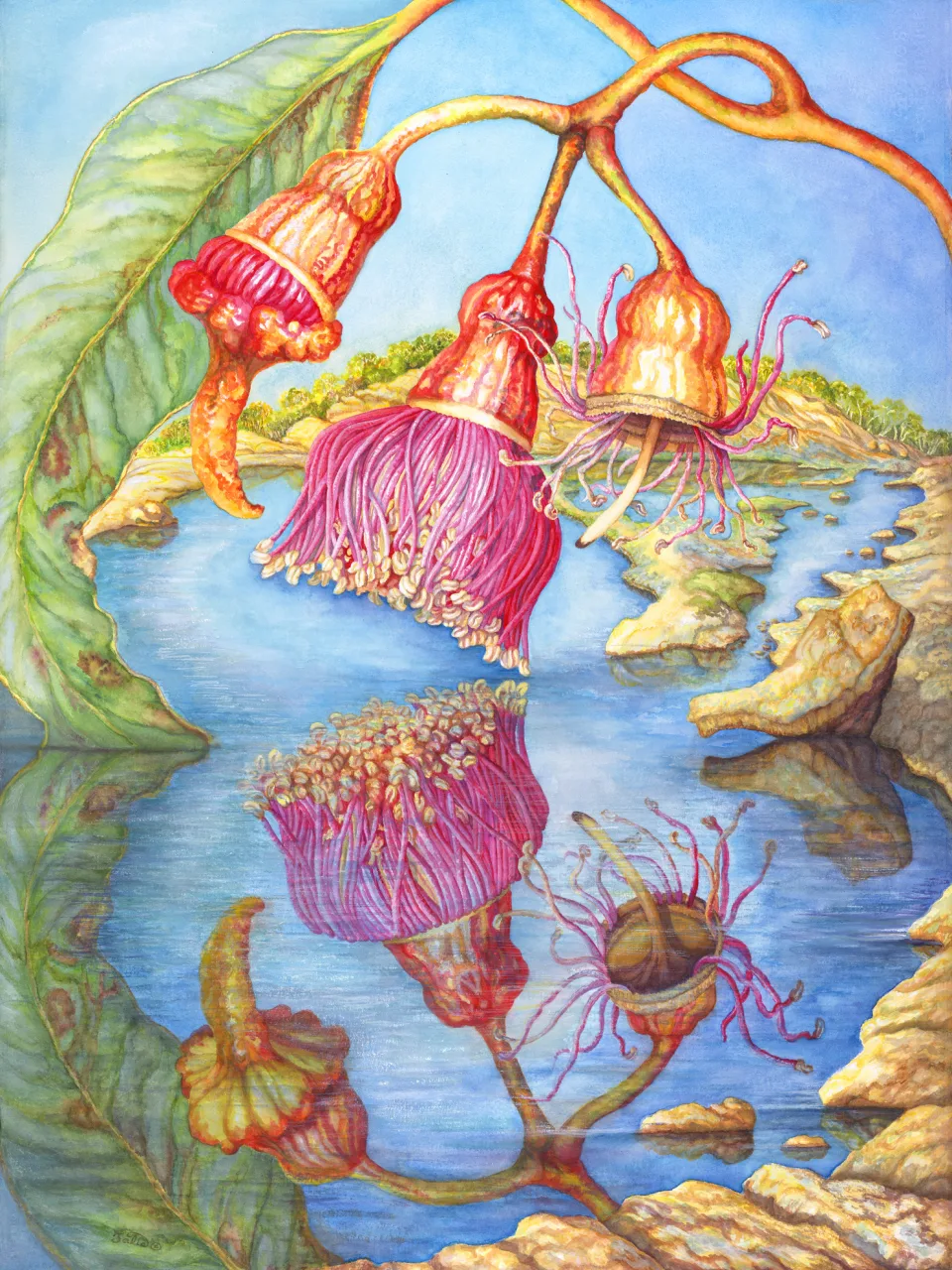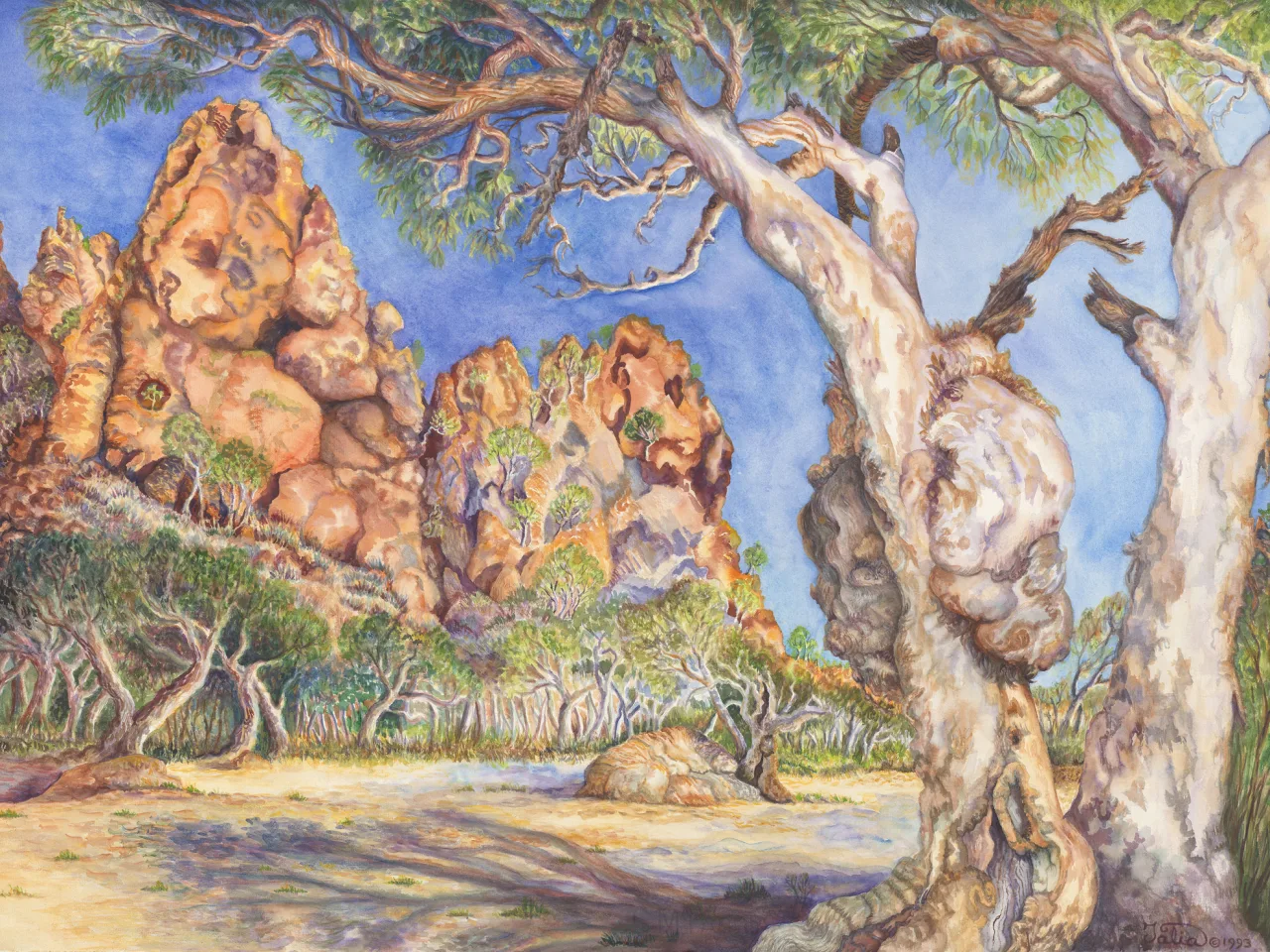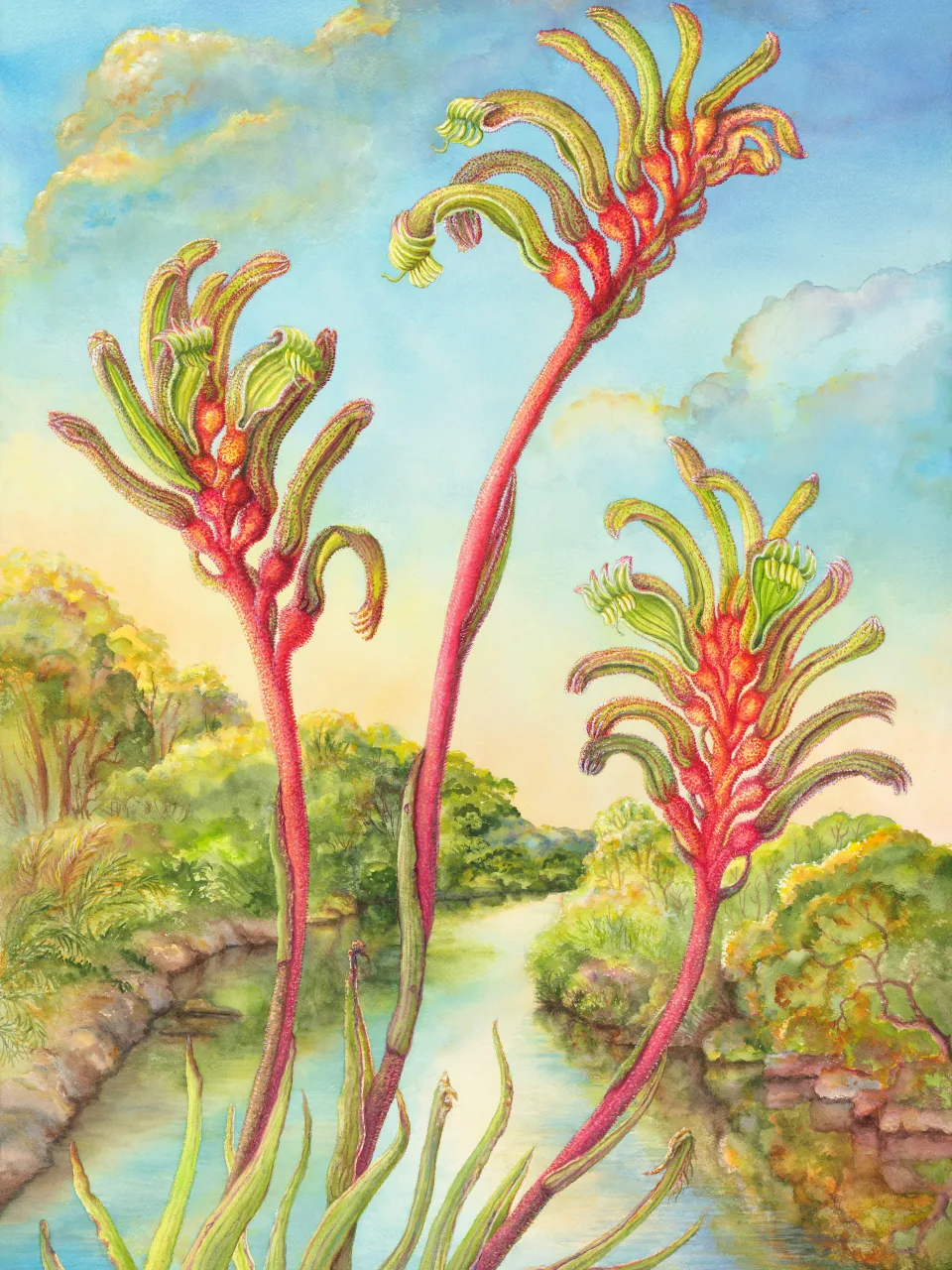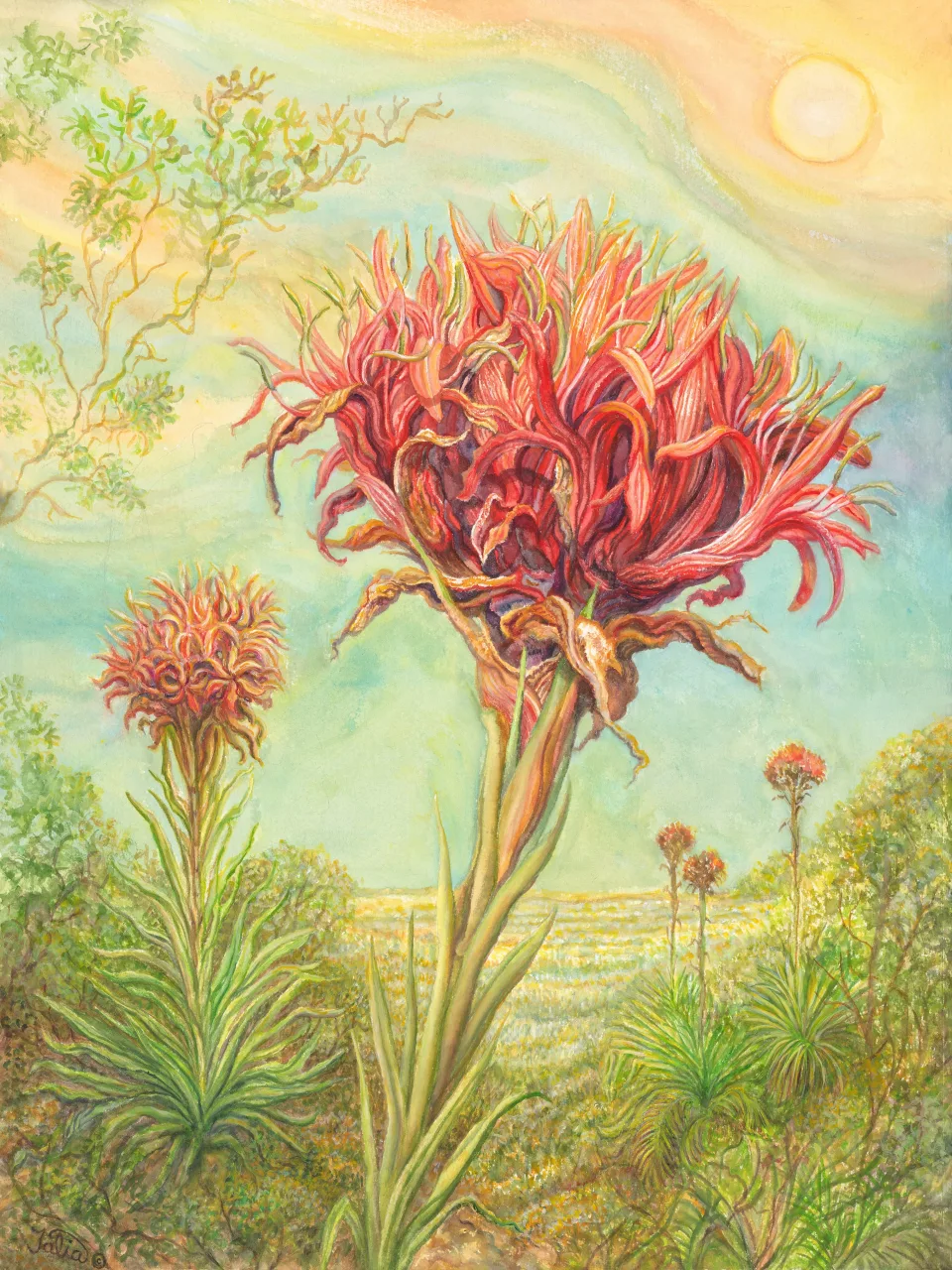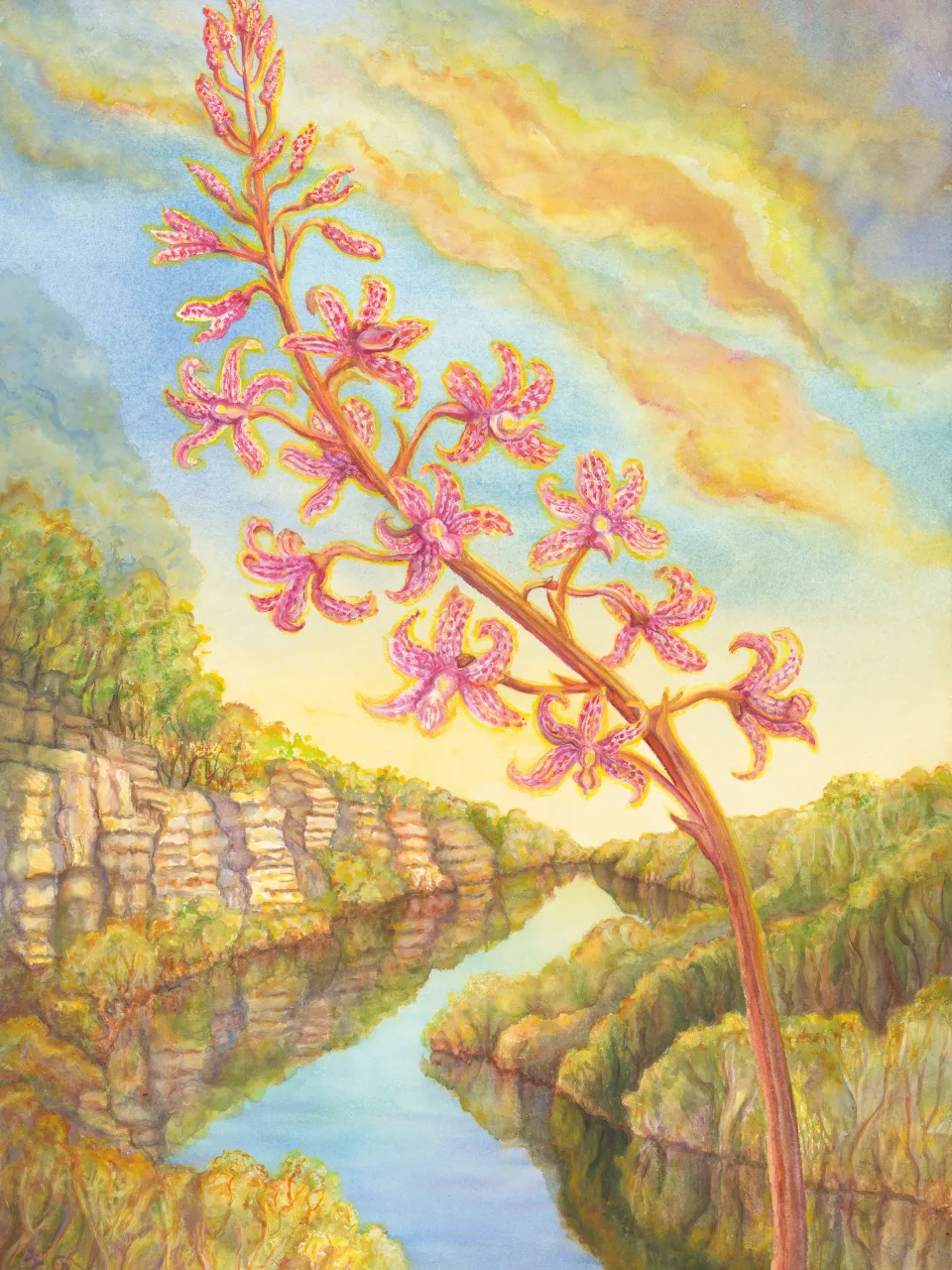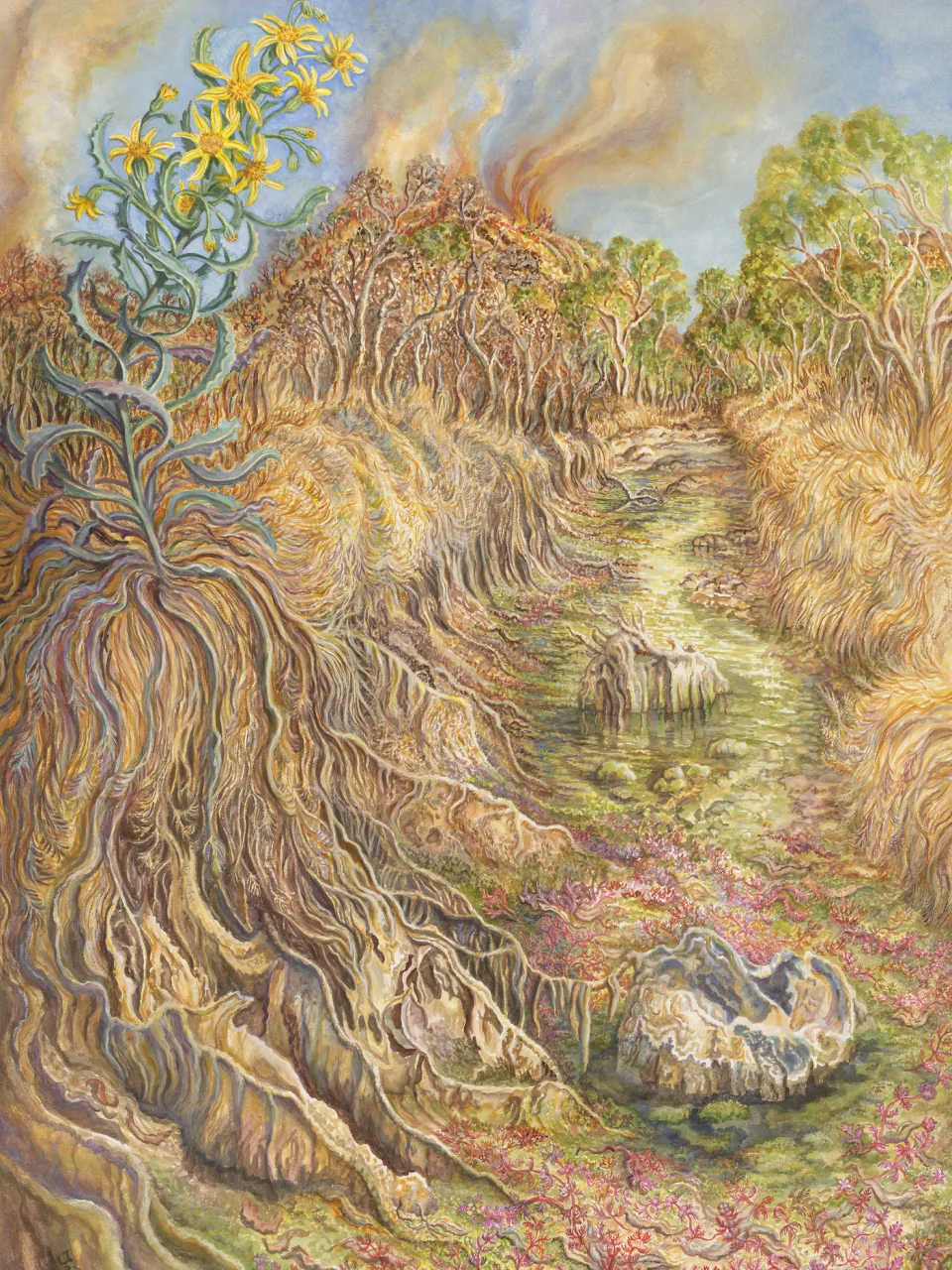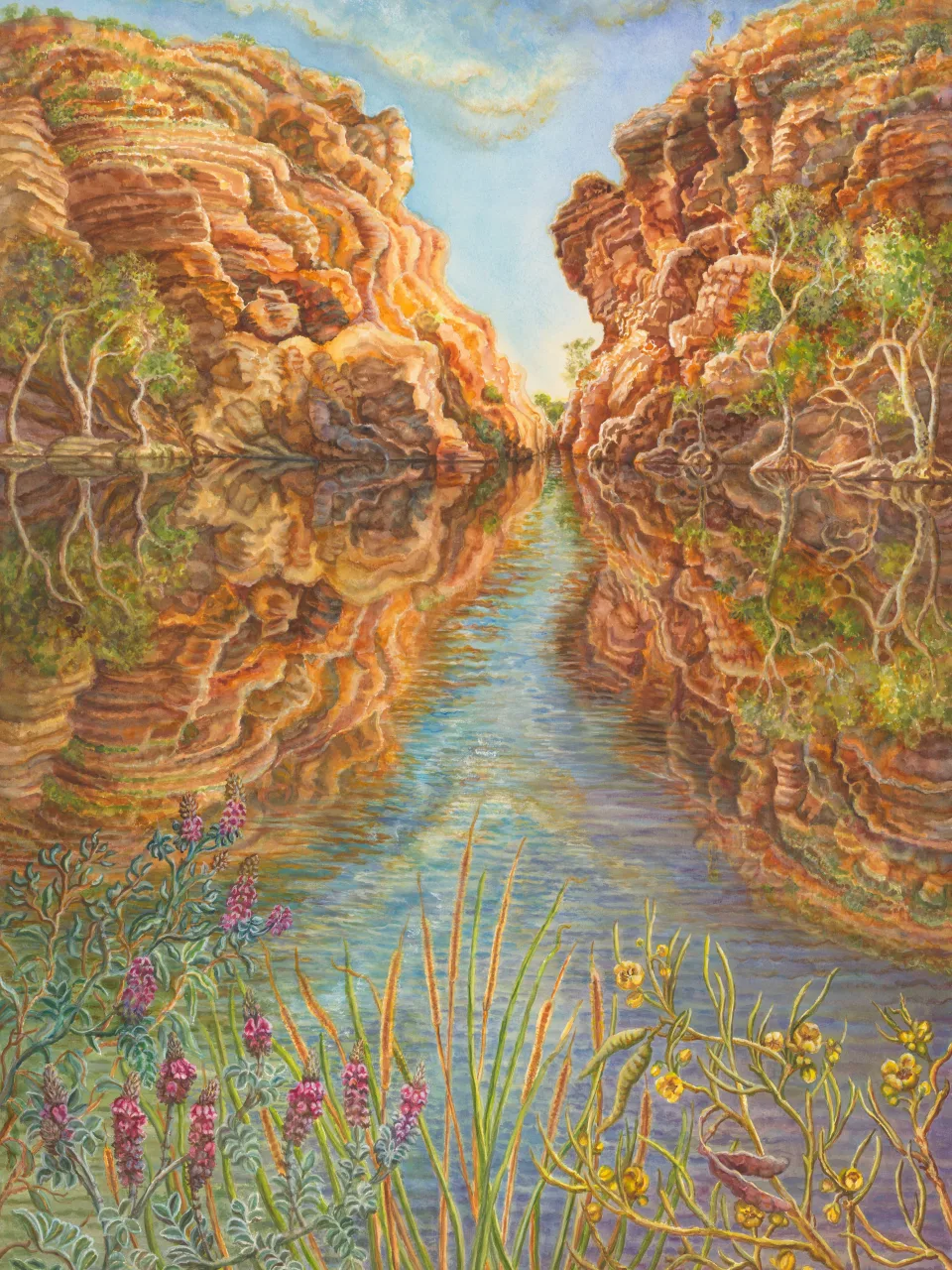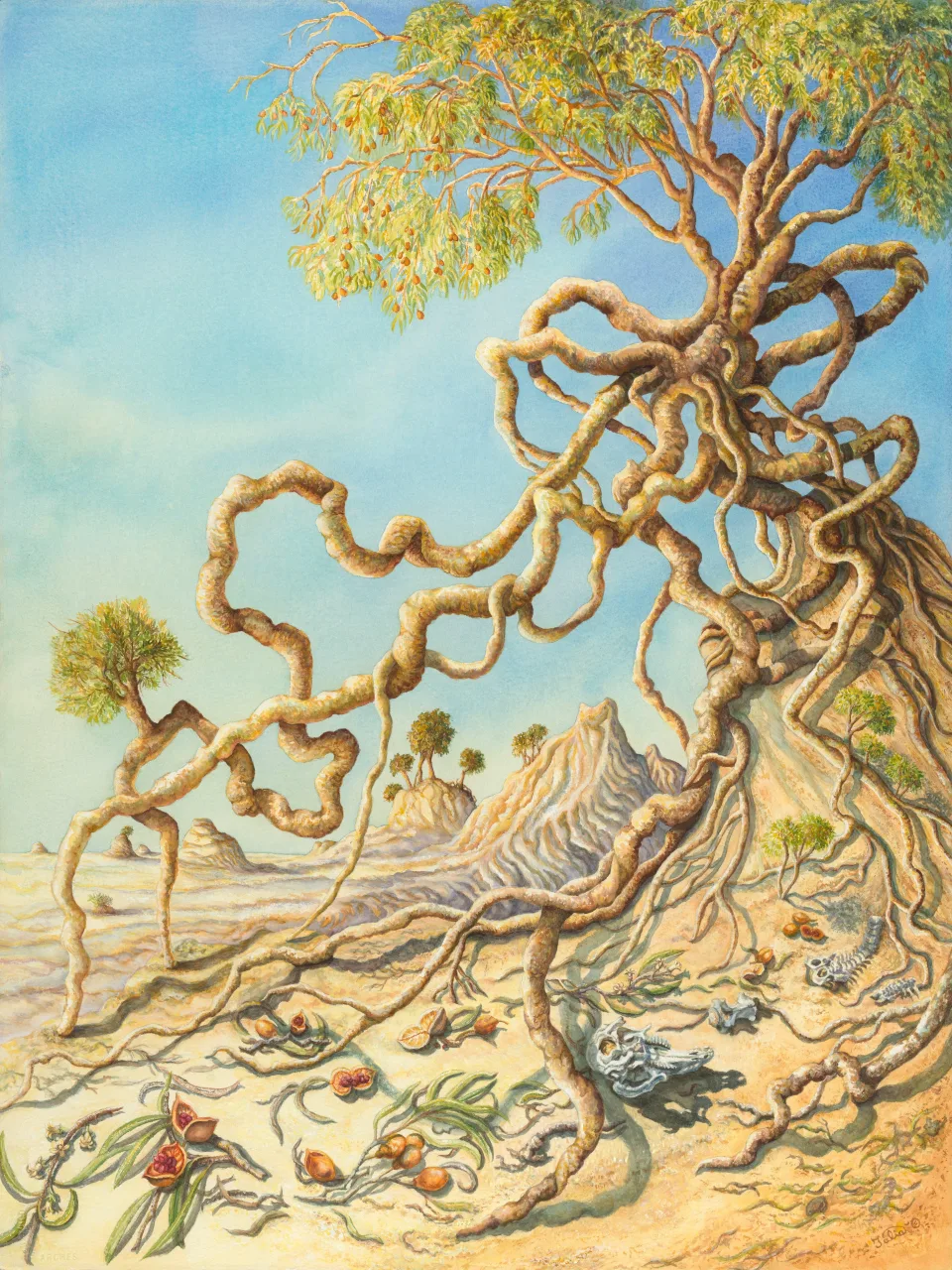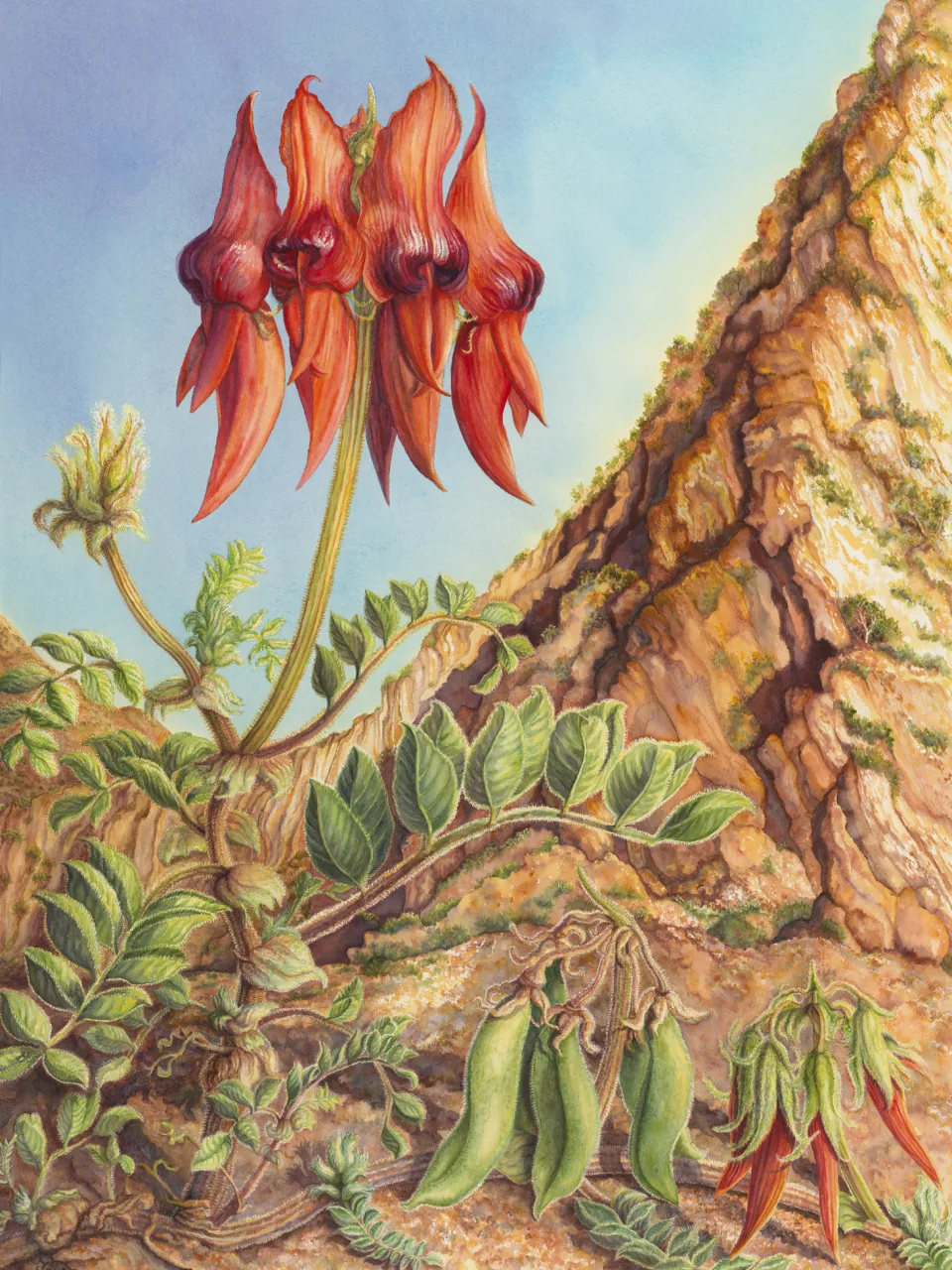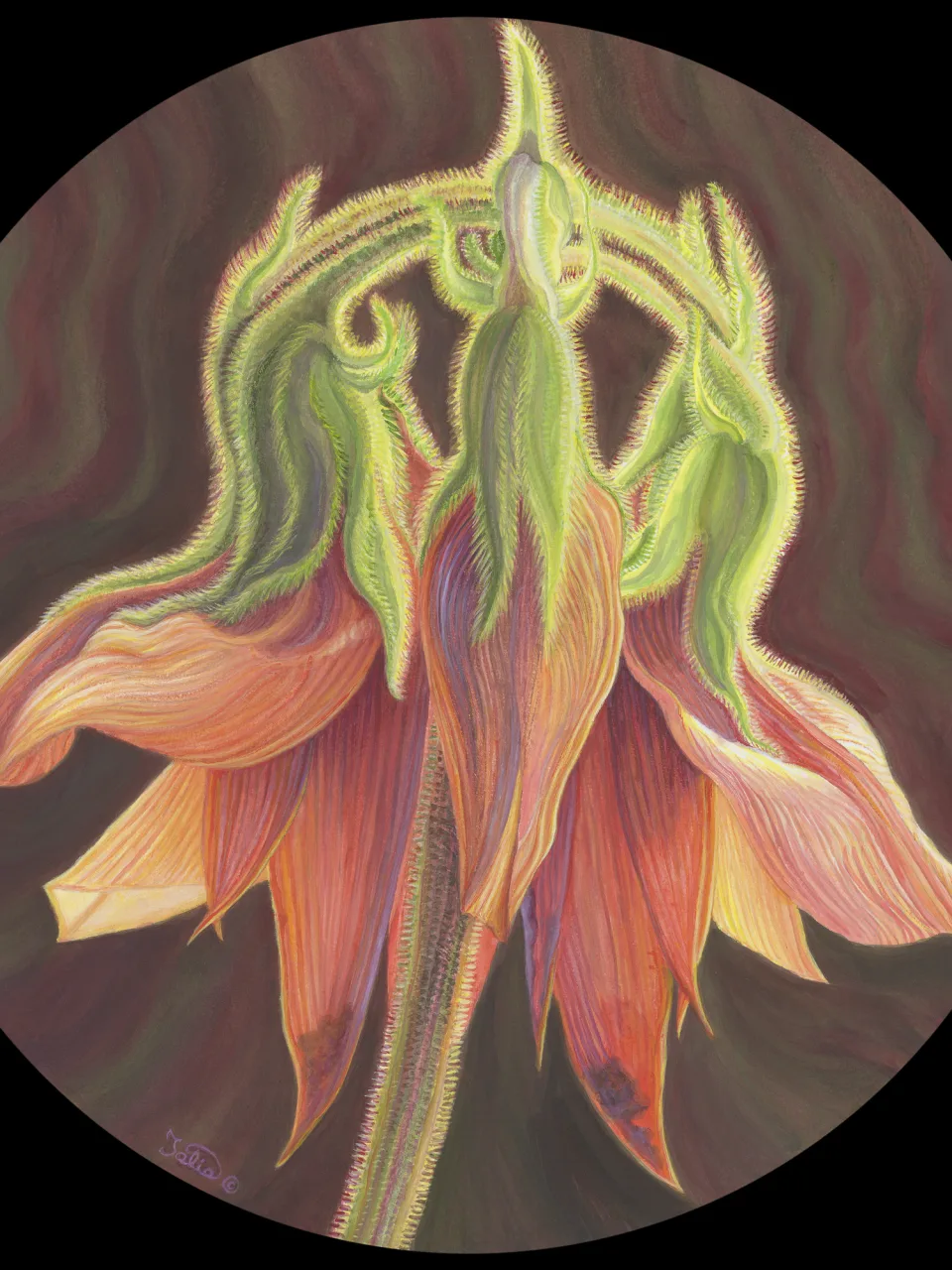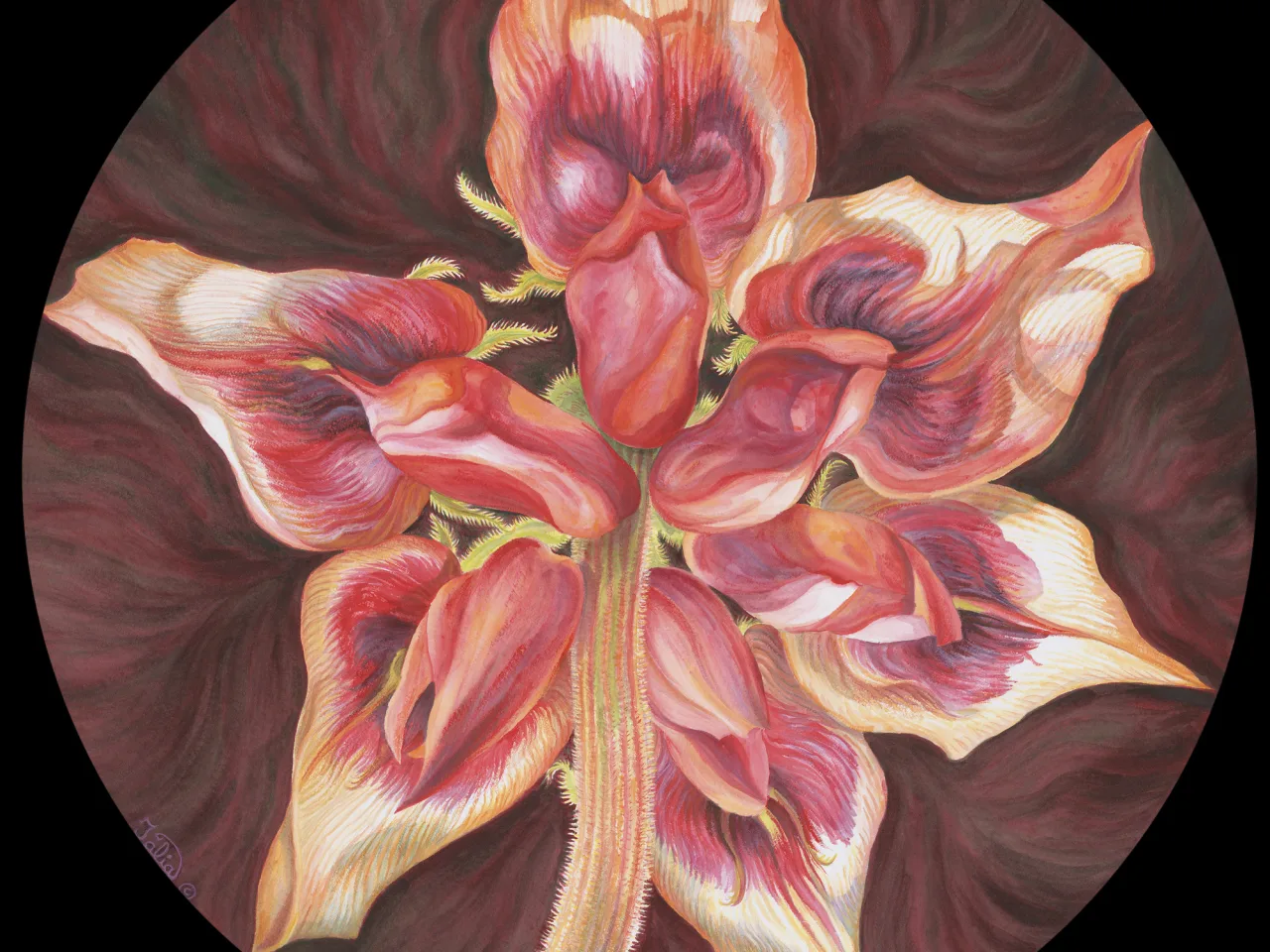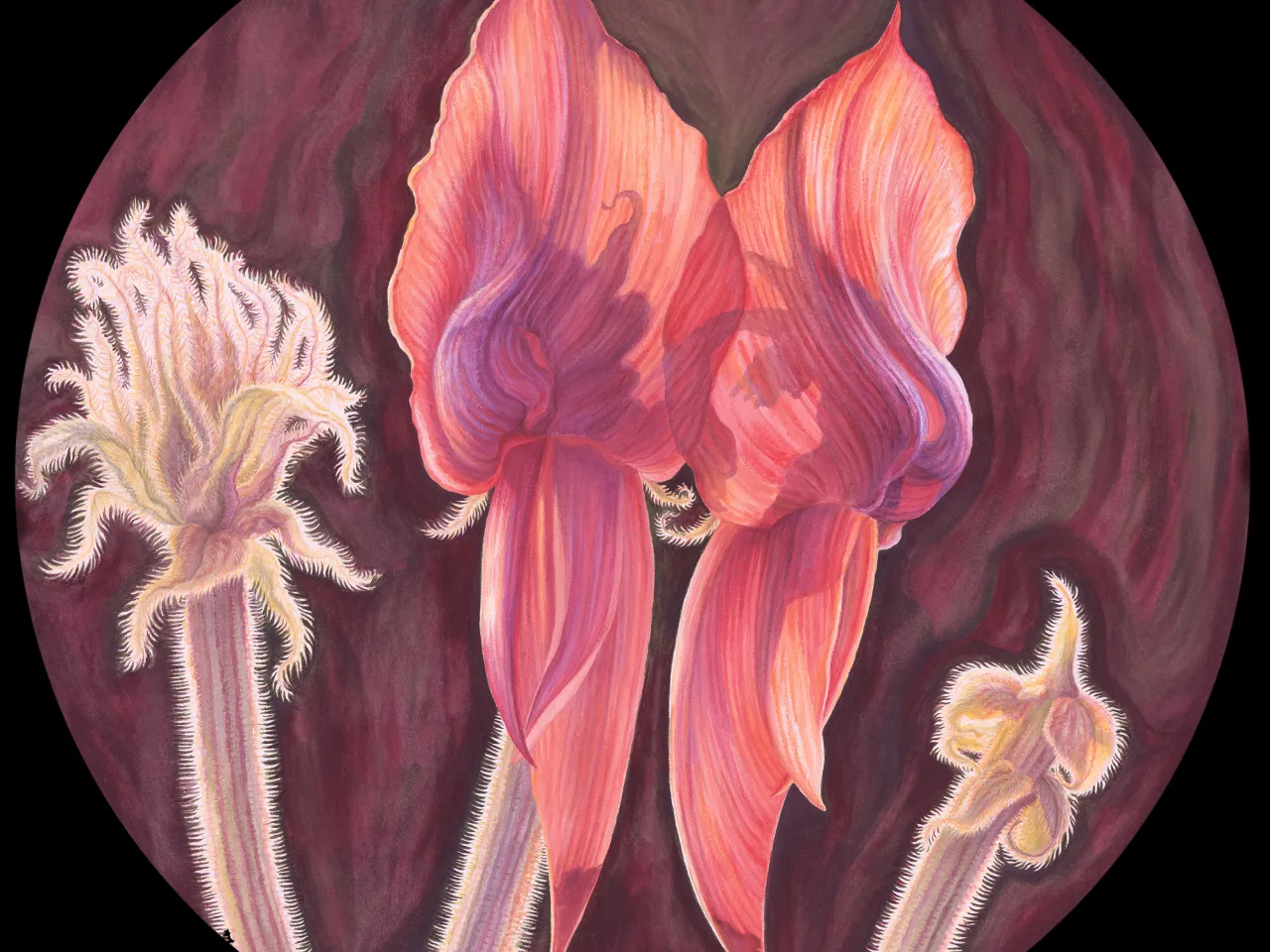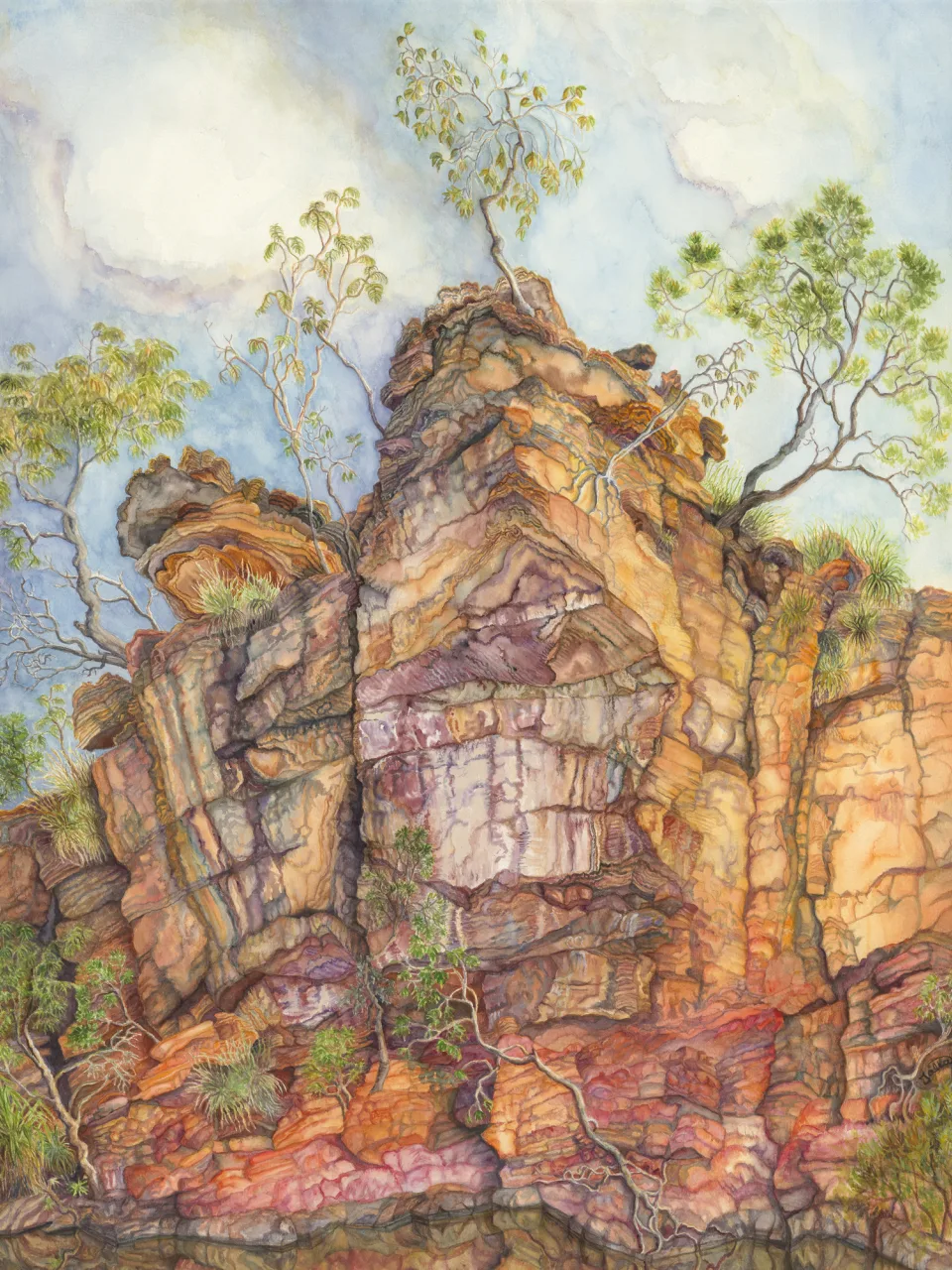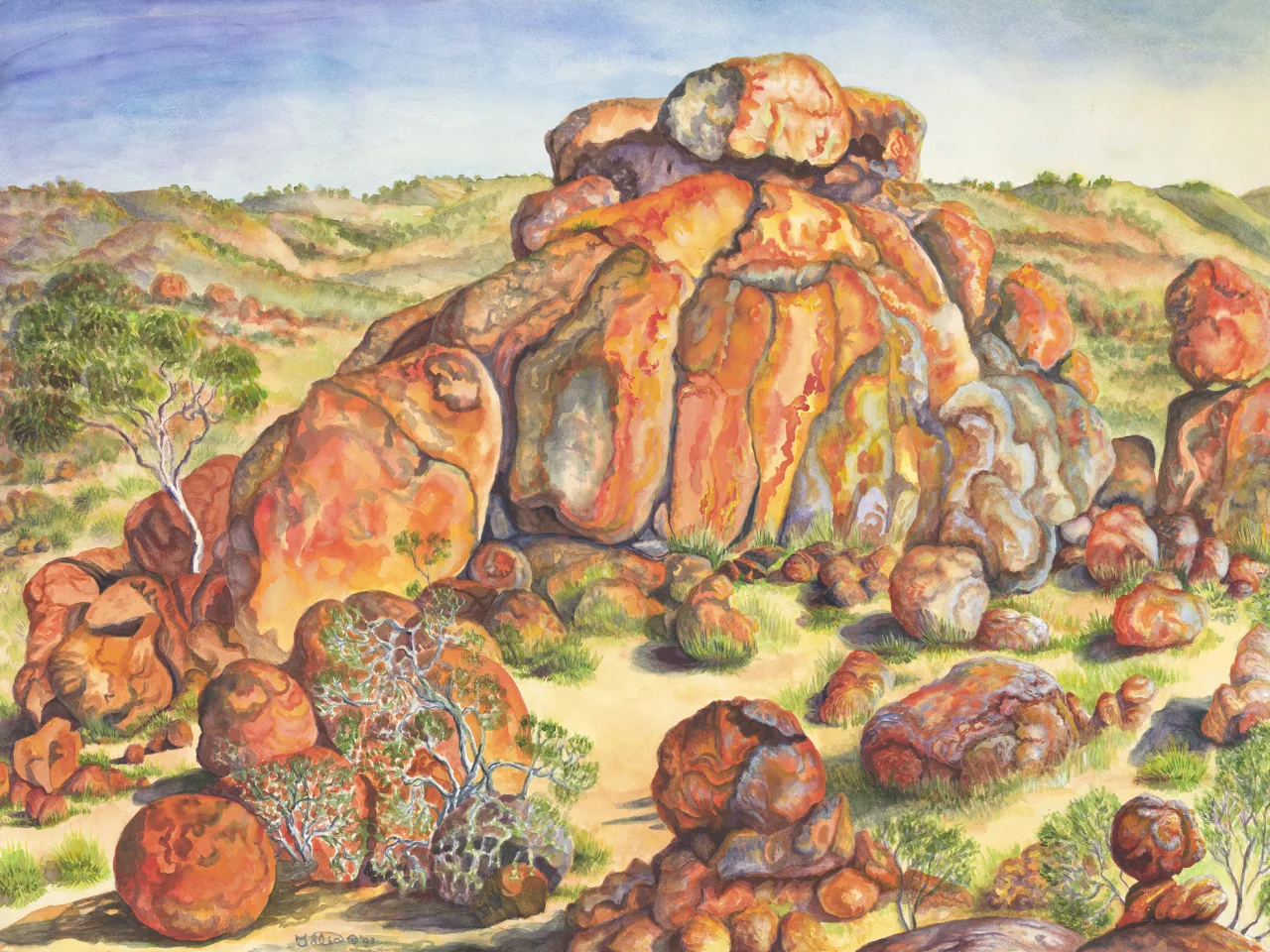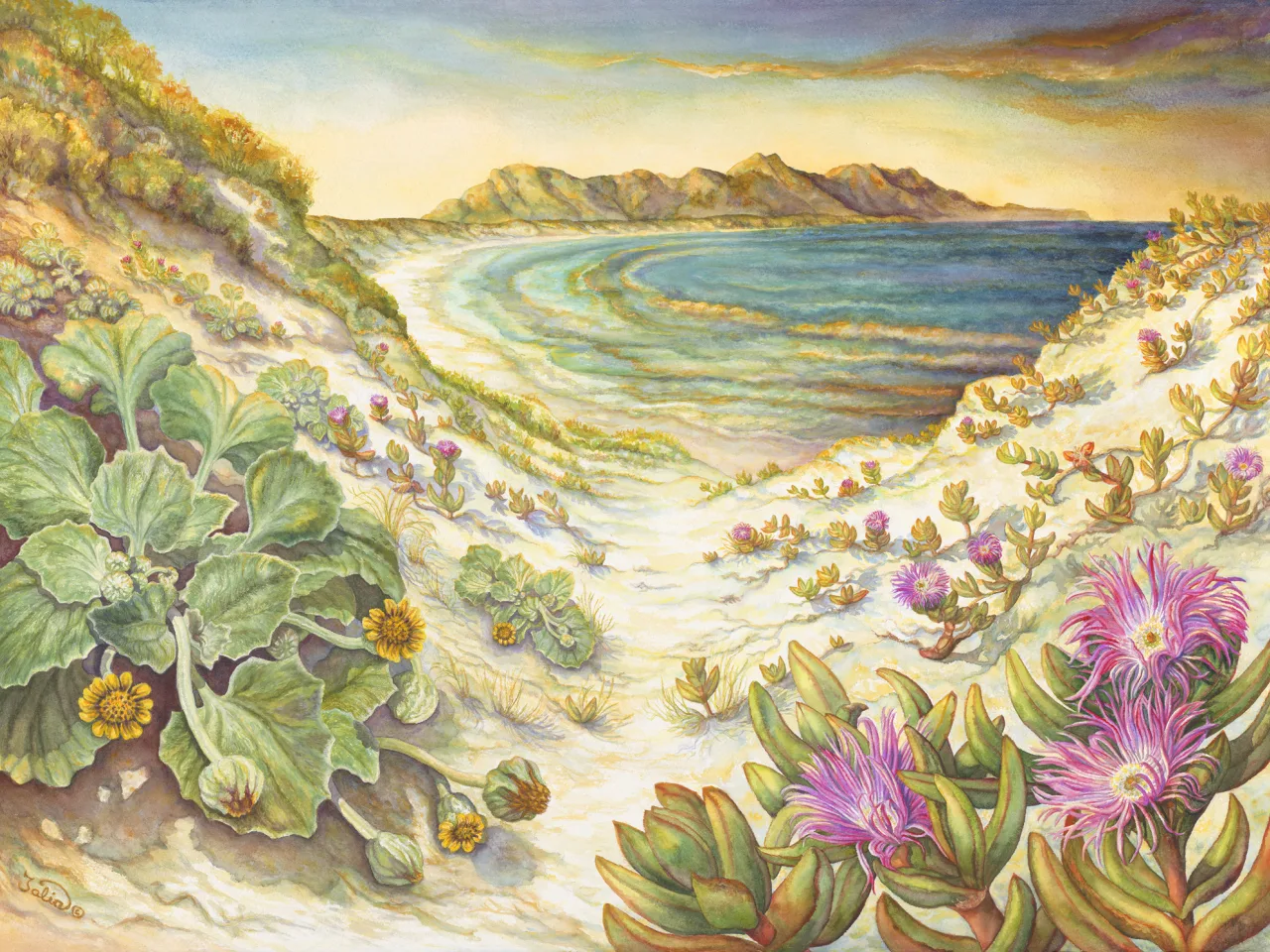Artwork 57 Ellery Quintet: A Year in the Life of a Desert Oasis. III—Survivors of Fire on the Ridges
Section 30
A Year in the Life of a Desert Oasis—Ellery Quintet
Ellery Creek, Tjorita / West MacDonnell National Park, Northern Territory
- 1. Acacia ligulata (umbrella bush)
- 2. Capparis spinosa var. nummularia (wild passionfruit)
- 3. Corymbia apparrerinja (ghost gum)
- 4. Corymbia terminalis (desert bloodwood)
- 5. Hakea lorea (long-leafed corkwood)
- 6. Ptilotus obovatus (silvertails)
- 7. Solanum ellipticum (bush tomato)
Artwork 57
Buy a print
Limited edition giclee archival quality print on 310 gsm Ilford cotton rag (from an original work in watermedia on watercolour board, 71 cm high x 51 cm wide)
from the artist
During 6 months with no rain, fires swept the ridges, and burnt the walking trails out of Ellery. A few months after the fires I decided to explore the western ridges, and soon discovered pockets of new growth, despite the continuing drought. Arid zone plants are magnificent survivors, and many thrive after fire, or depend upon it for renewed growth.
A star of this painting is the lovely little “bush tomato” (Solanum ellipticum). As I wandered over the ridges, all around me were burnt, blackened twigs, dried and browned spinifex clumps, whitened ashes, and exposed grey and ochre rocks. Suddenly a Solanum flower, pinkish-purple with yellow centre, surrounded by new blue-green velvety leaves, seemed to float into view, emerging from burnt soil and twigs—an unreal sight. This is a plant encouraged by fire to produce new growth. Being drought-resistant, it can even produce fruits in an extended dry season, although this small plant simply produced a single beautiful flower, and several new leaves.
Further along the ridge, a “desert bloodwood” tree (Corymbia terminalis) displayed a circlet of new leaves surrounding the base of its blackened, twisted trunk. This ability to suddenly produce new leaves from around the base of a burnt trunk is a fire survival strategy used by many eucalypts.
New leaves of “wild passionfruit” (Capparis spinosa var. nummularia), another fire tolerant plant, appeared on the ridge, together with “umbrella bush” (Acacia ligulata) which is known as a “fire weed”, as fire stimulates germination (Latz, 1995/1996, p. 105).
Many colourful rocks were fully exposed by the fires. Exploring the ridges, I discovered rocks with small darker insertions that looked, at a distance, like stripes pointing east-west, the direction all the ridges run. These are appropriately called “Dalmatian”, and display a mixture of pale and dark grey dolomite “blobs”, formed when layered sediments became intermixed. Also visible were limestone rocks with wavy sharp-edged grooves, channels etched by trickling rain water over long periods of time. Some of these limestone boulders are in the foreground, and others ascend the ridges on the right. Protruding from these are meandering rows of stromatolites, from when these ridges were part of a shallow sea about 800 mya.
On top of the ridges, some of the plants escaping fire decimation included ghost gums (Corymbia apparrerinja), corkwood (Hakea lorea) and silver tails (Ptilotus obovatus), a hardy drought-resistant “mulla mulla”.
